










By Joel C. Paredes
NEAR the scenic Pagbilao Bay, with a full view of the mystical Mount Banahaw, is a 25-hectare farm estate that former Agriculture Secretary Proceso Alcala believes could be the country’s first “Blue Zone.”
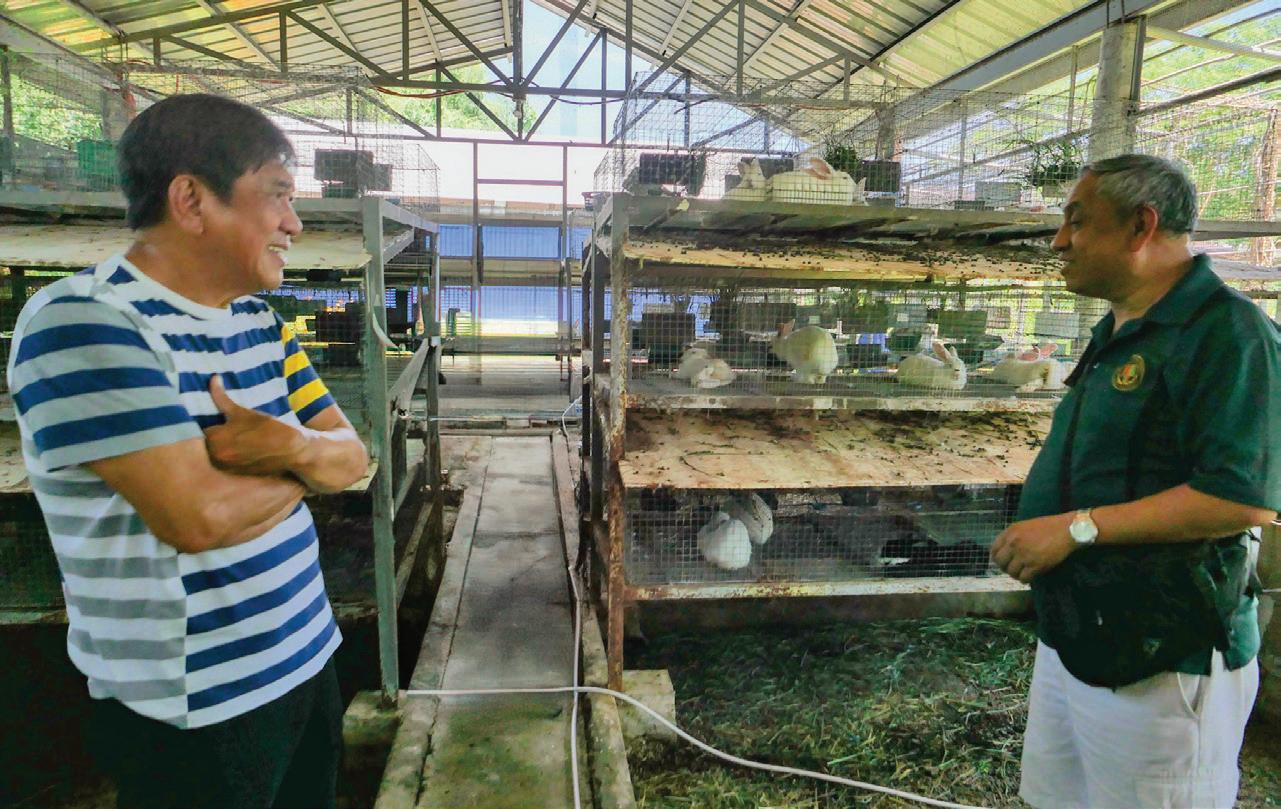


Learning from the pandemic lockdowns and inspired by the long, happy lives of people in self-contained farm estates, an ex-DA chief dreams of the country’s first “Blue Zone.”

Its exceptional environment, which he says is ideal for “natural” farming, holds the potential for allowing residents to live to 100 years, even while integrating modern technology. Call it an illusion, but the former agriculture secretary, who drew inspiration from his experiences during the Covid-19 lockdown, is now focusing on creating such a community where he intends to complete each cut of 1,500 square meters, with a modern Mexicanstyle cabana and employing Israeli technology: an automated 300-square-meter greenhouse with an attached rain shelter, a vegetable garden in the backyard and planted with 12 fruit-bearing trees.
crops like Japanese melons and honeydew. He admits that developing such a community “comes with a price,” and being a centenarian is not a privilege for all. Instead, it is for those who have succeeded in life and now desire to live in a natural farming community with the luxury of preparing their own farm-to-table food.
The concept of a “Blue Zone,” where people live significantly longer and healthier, was actually coined by explorer Dan Buettner, who, along with a team of researchers, identified these areas by circling them in blue on a map. Today, there are five recognized Blue Zones where people often have a high concentration of centenarians (people who live to be 100 or older) and experience lower rates of chronic diseases.
While genetics played a small role (20-30 percent), the remarkable longevity in Blue Zones is primarily attributed to shared lifestyle factors, environment, and social habits.
‘Longer life’
“WHAT people are looking for is to have a longer life,” said Alcala, a longtime diabetic sufferer who tries to manage the disease by regularly playing tennis, even at 70 years old.
“Who would want to live for 100 years? People with good living conditions and where money is not a problem. But for all of us, living life to our fullest is always in the heart,” he said.
Now, he believes that the solution to the problem of old age is to live in a stress-free environment, have a healthy lifestyle and enjoy nature with a complete source of natural resources.
While he is developing “La Corazon,” his farm estate, he is also completely refurbishing the old Pueblo del Playa, a private beach resort he described as a “village by the beach.” Now known as “Costa Solana,” Alcala has tapped the Hospitality International Inc. for the resort to become a prime tourist destination, driven by the region’s booming ecotourism market. According to Alcala, when the beach resort relaunches later in the year, it will be open to the farm residents, now that they are part of the community. Meanwhile, he said he is already prepared to market the farm estate residents’ harvests. Eventually, he expects to open the estate’s own market and a restaurant, where the cuisine will be sourced directly from their farm.
Natural farming
“WHAT we’re doing is to develop an area wherein natural farming is to be observed. But eventually, it will lead to organic farming,” he said. According to Alcala, they have reserved an area where they store animal manure collected from nearby farms, and then that will eventually be part of the top soil which they are using in farm plots. For quite some time now, his farm inside the estate has minimized the use of commercial fertilizers to ensure that even the oil and the mediums are natural.
They are, he explained, developing an area wherein natural farming is to be observed. “But eventually, it will lead to organic farming,” he said.
Alcala also quickly pointed out that naturally grown produce will be shared with local residents to support a healthy lifestyle. He emphasized that he isn’t just selling farm lots; trained agriculture technicians will be available to assist residents with natural farming.
Six months ago, Alcala also transformed a portion of the estate into a farmers’ school with a dormitory. This school has been accredited by TESDA and the Department of Agriculture. Instead of traditional classroom lectures, Alcala has designed his own farm for hands-on training, offering short courses in dairy farming, livestock breeding and production.
Alcala revealed a plan to distribute their organically bred animals to the existing community and their trainees for propagation. These include free-range chickens, native pigs, cattle and domesticated ruminants like goats and sheep. He has also reserved another 10 hectares for the expansion of the farm for breeding and dairy, along with emerging new natural and organic technologies in agriculture for the benefit of the community.
No trend-setter RIGHT now, he does not see himself as a trendsetter, but rather a person who can motivate all developers to consider transforming

their housing projects into communities that could develop into a Blue Zone.
“We may have hot weather, but if we are happy with our community, it’s already a good start,” says Alcala, a civil engineer who decided to develop mid-range subdivisions in his home province af-

ter returning from overseas work in the Middle East during the late Eighties.
Although he belonged to a prominent political clan, he opted to concentrate his advocacy on convening an environmental movement which fought against the ecological degradation of Mount Banahaw, and to protect the fishing community off Quezon against illegal activities. When he later offered to develop an industrial park in Lucena, a fast-growing coastal city, he was just ignored by the mayor, thinking that his family was trying to regain control of the local politics.
After his offer was rejected, Alcala decided to help small vegetable farmers, convinced that Quezon had the potential to be a major vegetable-producing province. He organized a group of farmers in Sariaya into a cooperative and then set up a trading center managed by the farmers themselves, minimizing control of middle men over their produce.
Alcala was offered the post of agriculture secretary when his congressional buddy Tarlac Rep. Benigno “Noynoy” Aquino won the presidency.
Covid lockdown’s lessons
ACCORDING to Alcala, it was during the Covid pandemic that he realized the need for a self-reliant community. That time, his family and about 30 farmhands survived the long-drawn lockdown through their naturally grown crops and organic pigs, along with several freerange chickens.
In his mind, he thought, “Why not build a Blue Zone village?” since he had shown success in dominating middle-income housing in the subdivisions he has developed in the past few decades.
Having retired from politics, and recognizing the potential of a peaceful environment coupled with naturally grown farm products, Alcala’s next endeavor is to explore how to “beat the aging process,” drawing inspiration from communities in the Blue Zones. He added a simple wish: “And I also want to enjoy my life somehow.”
115-year-old British woman, now the world’s oldest, gives her recipe to long life

LONDON—For Ethel Caterham, the trick to a long life — and in her case, it really has been—is not to argue.
Caterham, who is 115, became the world’s oldest living person, according to the Gerontology Research Group, after Sister Inah Canabarro, a Brazilian nun and teacher, died on April 30 at the tender age of 116.
“Never arguing with anyone, I listen and I do what I like,” she said from her nursing home in Surrey, southwest of London, on the secret to her longevity.
She was born on August 21, 1909, in the village of Shipton Bellinger in the south of England, five years before the outbreak of

World War I. She was the second youngest of eight siblings.
Travel has been in her blood, it’s clear. In 1927, at the age of 18, Caterham embarked on a journey to India, working as a nanny for a British family, where she stayed for three years before returning to England, according to the GRG.
She met her husband Norman, who was a major in the British army, at a dinner party in 1931, and they were stationed in Hong Kong and Gibraltar, the GRG said. They had two daughters whom they raised in the UK. Norman died in 1976.
Hallmark Lakeview Luxury Care Home in Camberley, where Caterham is a resident, posted pictures of her cutting a cake and wearing a “115” tiara in a Facebook post on May 1.
“Huge congratulations to Lakeview resident, Ethel on becoming the oldest person in the world! What an incredible milestone and a true testament to a life well-lived,” it said in an accompanying statement. “Your strength, spirit, and wisdom are an inspiration to us all. Here’s to celebrating your remarkable journey!”
The title of the oldest person ever is held by French woman Jeanne Calment, who lived to 122 years 164 days, according to Guinness World Records. AP
Editor: Angel R. Calso

By Isabella O’malley The Associated Press
SCIENTISTS say 4 billion people, about half the world’s population, experienced at least one extra month of extreme heat because of human-caused climate change from May 2024 to May 2025.
The extreme heat caused illness, death, crop losses, and strained energy and health care systems, according to the analysis from World Weather Attribution, Climate Central and the Red Cross.
“Although floods and cyclones often dominate headlines, heat is arguably the deadliest extreme event,” the report said. Many heatrelated deaths are unreported or are mislabeled by other conditions like heart disease or kidney failure.
The scientists used peer-reviewed methods to study how much climate change boosted temperatures in an extreme heat event
and calculated how much more likely its occurrence was because of climate change. In almost all countries in the world, the number of extreme heat days has at least doubled compared with a world without climate change.
Caribbean islands were among the hardest hit by additional extreme heat days. Puerto Rico, a territory of the United States, endured 161 days of extreme heat. Without climate change, only 48 would have occurred.
“It makes it feel impossible to be outside,” said Charlotte Gossett Navarro, chief director for Puer -
to Rico at Hispanic Federation, a nonprofit focused on social and environmental issues in Latino communities, who lives in the San Juan area and was not involved in the report.
“Even something as simple as trying to have a day outdoors with family, we weren’t able to do it because the heat was too high,” she said, reporting feeling dizzy and sick last summer.
When the power goes out, which happens frequently in Puerto Rico in part because of decades of neglected grid maintenance and damage from Hurricane Maria in 2017, Navarro said it is difficult to sleep. “If you are someone relatively healthy, that is uncomfortable, it’s hard to sleep ... but if you are someone who has a health condition, now your life is at risk,” Gossett Navarro said.
Heat waves are silent killers, said Friederike Otto, associate professor of climate science at Imperial College London, one of the report’s authors. “People don’t fall dead on the street in a heat wave ... people either die in hospitals or in poorly insulated homes and therefore are just not seen,” he said.

Low-income communities and vulnerable populations, such as older adults and people with medical conditions, suffer the most from extreme heat.
The high temperatures recorded in the extreme heat events that occurred in Central Asia in March, South Sudan in February and in the Mediterranean last July would have not been possible without
climate change, according to the report. At least 21 people died in Morocco after temperatures hit 118 degrees Fahrenheit (48 degrees Celsius) last July. People are noticing temperatures are getting hotter but don’t always know it is being driven by climate change, said Roop Singh, head of urban and attribution at the Red Cross Red Crescent Climate Centre, in a
World Weather Attribution statement.
“We need to quickly scale our responses to heat through better early warning systems, heat action plans, and long-term planning for heat in urban areas to meet the rising challenge,” Singh said. City-led initiatives to tackle extreme heat are becoming popular in parts of South Asia, North America, Europe and Australia to coordinate resources across governments and other agencies. One example is a tree-planting initiative launched in Marseille, France, to create more shaded areas.
The report says strategies to prepare for heat waves include monitoring and reporting systems for extreme temperatures, providing emergency health services, cooling shelters, updated building codes, enforcing heat safety rules at work, and designing cities to be more heat-resilient. But without phasing out fossil fuels, heat waves will continue becoming more severe and frequent and protective measures against the heat will lose their effectiveness, the scientists said.
What happens to Trump’s tariffs now that a court has knocked
By Paul Wiseman & Lindsay Whitehurst
The Associated Press
ASHINGTON—Presi -
Wdent Donald Trump has audaciously claimed virtually unlimited power to bypass Congress and impose sweeping taxes on foreign products. Now a federal court has thrown a roadblock in his path.
A three-judge panel of the US Court of International Trade ruled Wednesday that Trump overstepped his authority when he invoked the 1977 International Emergency Economic Powers Act to declare a national emergency and plaster taxes – tariffs – on imports from almost every country in the world.
The ruling was a big setback for Trump, whose erratic trade policies have rocked financial markets, paralyzed businesses with uncertainty and raised fears of higher prices and slower economic growth. On his Truth Social platform Thursday, he wrote: “The ruling by the U.S. Court of International Trade is so wrong, and so political! Hopefully, the Supreme Court will reverse this horrible, Country threatening decision, QUICKLY and DECISIVELY.”
Trump’s trade wars are far from over. The Court of Appeals for the Federal Circuit on Thursday allowed the president to temporarily continue collecting the tariffs
under the emergency powers law while he appeals the trade court’s decision.
Jeffrey Schwab, senior counsel at the nonprofit Liberty Justice Center who represented the five small businesses that sued, called the appeals court order a mere “procedural step.’’ He expressed confidence that courts would block the tariffs, which represent “a direct threat’’ to his clients’ livelihoods.
The administration has other ways to pursue the president’s goal of using tariffs to lure factories back to America, raise money for the US Treasury and pressure other countries into bending to his will.
Financial markets, which would welcome an end to Trump’s tariffs, had a muted response to the news Thursday; stocks rose modestly.
“Investors are not getting too carried away, presumably in the expectation that the White House will find a workaround that allows them to continue to pursue their trade agenda,’’ said Matthew Ryan, head of market strategy at the financial services firm Ebury.
Trump’s IEEPA tariffs are being challenged in at least seven lawsuits. In the ruling Wednesday, the trade court combined two of the cases—one brought by five small businesses and another by 12 US states.
The US Court of International Trade has jurisdiction over civil cases involving trade. The legal

challenge to Trump’s tariff is widely expected to end up at the US Supreme Court.
Which tariffs did the court block?
THE court’s decision blocks the tariffs Trump slapped last month on almost all US trading partners and levies he imposed before that on China, Mexico and Canada.
Trump on April 2—Liberation Day, he called it—imposed socalled reciprocal tariffs of up to 50% on countries with which the United States runs a trade deficit and 10% baseline tariffs on almost everybody else. He later suspended the reciprocal tariffs for 90 days to give countries time to negotiate trade agreements with the United States—and reduce their barriers to American exports. But he kept the baseline tariffs in place.
Claiming extraordinary power to act without congressional approval, he justified the taxes under IEEPA by declaring the United States’ longstanding trade deficits “a national emergency.”
“The reason that he chose IEEPA was he thought he could do this unilaterally without much oversight by Congress,” Schwab said.
In February, he’d invoked the law to impose tariffs on Canada, Mexico and China, saying that the illegal flow of immigrants and drugs across the US border amounted to a national emergency and that the three countries needed to do more to stop it.
The US Constitution gives Congress the power to set taxes, including tariffs. But lawmakers have gradually let presidents assume more power over tariffs— and Trump has made the most of it.
Why did the court rule against the president?
THE administration had argued that courts had approved thenPresident Richard Nixon’s emergency use of tariffs in the economic chaos that followed his decision to end a policy that linked the US

By Chris Megerian The Associated Press
WASHINGTON—Elon Musk arrived in the nation’s capital with the chain saw-wielding swagger of a tech titan who had never met a problem he couldn’t solve with lots of money, long hours or a wellcalibrated algorithm.
President Donald Trump was delighted to have the world’s richest person—and a top campaign donor—working in his administration, talking about how he was “a smart guy” who “really cares for our country.”
Musk was suddenly everywhere—holding forth in Cabinet meetings while wearing a “tech support” shirt and black MAGA hat, hoisting his young son on his shoulders in the Oval Office, flying aboard Air Force One, sleeping in the White House. Democrats described the billionaire entrepreneur as Trump’s “co-president,” and senior officials bristled at his imperial approach to overhauling the federal government.
After establishing Tesla as a premier electric automaker, building rockets at SpaceX and reshaping the social media landscape by buying Twitter, Musk was confident that he could bend Washington to his vision.
Now that’s over. Musk said this week that he’s leaving his job as a senior adviser, an announcement that came after he revealed his plan to curtail political donations and he criticized the centerpiece of Trump’s legislative agenda.
It’s a quiet exit after a turbulent entrance, and he’s trailed by upheaval and unmet expectations. Thousands of people were indiscriminately laid off or pushed out—hundreds of whom had to be rehired—and some federal agencies were eviscerated.
But no one has been prosecuted for the fraud that Musk and Trump said was widespread within the government. Musk reduced his target for cutting spending from $2 trillion to $1 trillion to $150 billion, and even that goal may not be reached.
In Silicon Valley, where Musk got his start as a founder of PayPal, his kind of promises are known as vaporware—a product that sounds extraordinary yet never gets shipped to market.
Trump said Thursday on his Truth Social platform that he would hold a press conference Friday with Musk. “This will be his
Continued from A3 dollar to the price of gold. The Nixon administration successfully cited its authority under the 1917 Trading with Enemy Act, which preceded and supplied some of the legal language later used in IEEPA.
The court rejected the administration’s argument this time, deciding that Trump’s sweeping tariffs exceeded his authority to regulate imports under IEEPA. It also said the tariffs did nothing to deal with problems they were supposed to address. In their case, the states noted that America’s trade deficits hardly amount to a sudden emergency. The United States has racked them up for 49 straight years in good times and bad.
last day, but not really, because he will, always, be with us, helping all the way,” Trump added. “Elon is terrific!”
Musk’s position was always designed to be temporary, and he had previously announced his intention to dedicate more of his time to his companies. But he also told reporters last month that he was willing to work part-time for Trump “indefinitely, as long as the president wants me to do it.”
Musk got a seat at Trump’s table and put $250 million behind his campaign IT was clear that Musk wouldn’t be the typical kind of presidential adviser around the time that he showed the world his belly button.
Racing on stage at a campaign rally one month before the election, he jumped for joy next to Trump, his T-shirt rising to expose his midriff. Musk had already sold Trump on his idea for a Department of Government Efficiency while also putting at least $250 million behind his candidacy.
The plan called for a task force to hunt for waste, fraud and abuse, a timeworn idea with a new twist. Instead of putting together a blueribbon panel of government experts, Trump would give his top donor a desk in the White House and what appeared to be carte blanche to make changes.
Musk deployed software engineers who burrowed into sensitive databases, troubling career officials who sometimes chose to resign rather than go along. Trump brushed off concerns about Musk’s lack of experience in public service or conflicts of interest from his billions of dollars in federal contracts.
Their unlikely partnership had the potential for a generational impact on American politics and government. While Musk dictated orders for government departments from his perch in the White House, he was poised to use his wealth to enforce loyalty to the president. His language was that of catastrophism. Excessive spending was a crisis that could only be solved by drastic measures, Musk
Another federal judge also blocked Trump’s use of an emergency powers law to impose tariffs on Thursday. The ruling from US District Judge Rudolph Contreras came in a lawsuit from two Illinoisbased educational toy companies. The ruling only blocks the collection of tariffs from the companies that sued, and was handed down the day after the trade court’s broader finding.
So where does this leave Trump’s trade agenda?
WENDY CUTLER , a former US trade official who is now vice president at the Asia Society Policy Institute, says Wednesday’s decision “throws the president’s trade policy into turmoil.” Other countries may be reluctant to make concessions during
claimed, and “if we don’t do this, America will go bankrupt.”
But even though he talked about his work in existential terms, he treated the White House like a playground. He brought his children to a meeting with the Indian prime minister. He let the president turn the driveway into a makeshift Tesla showroom to help boost sales. He installed an oversized screen in his office that he occasionally used to play video games.
Sometimes, Trump invited Musk to sleep over in the Lincoln Bedroom.
“We’ll be on Air Force One, Marine One, and he’ll be like, ‘do you want to stay over?’” Musk told reporters. The president made sure he got some caramel ice cream from the kitchen.
“This stuff’s amazing,” Musk said. “I ate a whole tub of it.”
Looking back on his experience in government, he described it as a lark.
“It is funny that we’ve got DOGE,” an acronym that references an online meme featuring a surprised-looking dog from Japan. “How did we get here?”
Musk did not give federal workers the benefit of the doubt FROM the beginning, Musk treated federal workers with contempt. At best, they were inefficient; at worst, they were committing fraud.
His team offered them a “fork in the road,” meaning they could get paid to quit. Probationary employees, generally people new on the job without full civil service protection, were shown the door.
Anyone who stayed faced escalating demands, such as what became known as the “five things” emails. Musk wanted every government employee to submit a list of five things they accomplished in the previous week, and he claimed that “failure to respond will be taken as a resignation.”
Some administration officials curtailed the plan, concerned that it could jeopardize security in more sensitive areas of the government, and it eventually faded, an early sign of Musk’s struggle to get traction.
But in the meantime, he continued issuing orders like thunderbolts.
One day in February, Musk posted “CFPB RIP,” plus an emoji of a tombstone. The headquarters of the Consumer Financial Protection Bureau, created after the Great Recession to protect Americans from fraud and deceptive practices, was shut down and employees were ordered to stop working.
Musk had already started gutting the US Agency for Inter -
Trump’s 90-day pause if there’s a chance the courts will uphold the decision striking down the IEEPA tariffs. “Can those negotiations move forward?’’ said Antonio Rivera, a partner at ArentFox Schiff and a former Customs and Border Protection attorney. Likewise, companies will have to reassess the way they run their supply chains, perhaps speeding up shipments to the United States to offset the risk that the tariffs will be reinstated on appeal. Still, the ruling leaves in place other Trump tariffs, including those on foreign steel, aluminum and autos. Those levies were invoked under a different legal authority—Section 232 of the Trade Expansion Act of 1962—that requires a Commerce Department investigation and cannot simply

national Development, a pillar of the country’s foreign policy establishment and the world’s largest provider of humanitarian assistance.
“Spent the weekend feeding USAID into a wood chipper,” he bragged.
Thousands of contacts were cut off, pleasing conservatives who disliked the agency’s progressive initiatives on climate change and gay rights.
Musk rejected concerns about the loss of a crucial lifeline for impoverished people around the globe, saying, “no one has died.” However, children who once relied on American assistance perished from malnutrition, and the death toll is expected to increase.
The lawsuits began piling up. Sometimes workers got their jobs back, only to lose them again.
The Food and Drug Administration, which is responsible for ensuring the safety of everything from baby formula to biotech drugs, planned to lay off 3,500 employees. But again and again, the agency was forced to rehire people who were initially deemed expendable, including laboratory scientists, travel bookers and document specialists.
Commissioner Marty Makary, who started his job after many of the cuts took place, told attendees at a recent conference that “it was hard and my job is to make sure we can heal from that.”
Only 1,900 layoffs took place, but another 1,200 staffers took buyouts or early retirement. Experts fear the agency has lost much of its institutional knowledge and expertise in areas like vaccines, tobacco and food.
There are also concerns about safety on public lands. The National Park Service has been bleeding staff, leaving fewer people to maintain trails, clean restrooms and guide visitors. More cuts at the Forest Service could undermine efforts to prevent and fight wildfires.
The Environmental Protection Agency faces a broad overhaul, such as gutting the Office of Research and
be imposed at the president’s own discretion.
Trump still has the authority to raise those Section 232 tariffs. He can also pursue new ones. The Commerce Department, for instance, last month launched a Section 232 investigation into the national security implications of pharmaceutical imports.
The court also left in place tariffs Trump imposed on China in his first term— and President Joe Biden kept—in a dispute over Beijing’s use of hard-nose tactics to give Chinese companies an edge in advanced technology. The US alleged that China unfairly subsidized its own firms, forced companies from the US and other foreign countries to hand over trade secrets and even engaged in cybertheft. Trump has leeway to
Development, which was responsible for improving air pollution monitoring and discovering harmful chemicals in drinking water.
Not even low-profile organizations were exempt. Trump ordered the downsizing of the US Institute of Peace, a nonprofit think tank created by Congress, and Musk’s team showed up to carry out his plan. The organizations’ leaders were deposed, then reinstated after a court battle.
Musk made little headway at the top sources of federal spending
THE bulk of federal spending goes to health care programs like Medicaid and Medicare, plus Social Security and the military.
Unfortunately for Musk, all of those areas are politically sensitive and generally require congressional approval to make changes.
Thousands of civilian workers were pushed out at the Pentagon, and Defense Secretary Pete Hegseth is reducing the ranks of top generals and looking to consolidate various commands. A plan to downsize an office for testing and evaluating new weapons systems could save $300 million per year.
Hegseth recently asked employees to submit one idea per week for cutting waste.
However, the Pentagon budget would increase by $150 billion, for a total of more than $900 billion, under Trump’s spending proposal working its way through Congress.
The money includes $25 billion to lay the groundwork for Trump’s “golden dome” missile defense program and $34 billion to expand the naval fleet with more shipbuilding.
Another $45 million is expected to be spent on a military parade on June 14, which is the 250th anniversary of the Army’s founding and Trump’s 79th birthday.
Musk also faced blowback for targeting Social Security, which provides monthly benefits to retirees and some children. He suggested that the popular program was “a Ponzi scheme” and the government could save between $500
expand those tariffs if he wants to put more pressure on China.
The trade court also noted Wednesday that Trump retains more limited power to impose tariffs to address trade deficits under another statute, the Trade Act of 1974. But that law restricts tariffs to 15% and to just 150 days on countries with which the United States runs big trade deficits.
What is the likely the economic and financial fallout from the decision?
WHEN the IEEPA tariffs were in place, America’s average tariff rate was 15%, the highest in decades and up from 2.5% before Trump’s tariff onslaught began this year. Without them, the US tariff rate is still a hefty 6.5%, according to economists Stephen Brown and
billion and $700 billion by tackling waste and fraud.
However, his estimates were inflated. Social Security’s inspector general said there was only $71.8 billion in improper payments over eight years. Nor was there any evidence that millions of dead people were receiving benefits.
Changes to Social Security phone services, pitched as a way to eliminate opportunities for fraud, were walked back after an outcry from lawmakers and beneficiaries. But the agency could still shed 7,000 workers while closing some of its offices.
Musk’s popularity cratered even though Americans often agreed with his premise that the federal government is bloated and wasteful, according to polling from The Associated Press-NORC Center for Public Affairs Research.
Just 33% of US adults had a favorable view of Musk in April, down from 41% in December. In addition, 65% said Musk had too much influence over the federal government.
Musk talked of staggering savings but delivered modest results
DURING a campaign rally in October, Musk said he could find “at least $2 trillion” in spending cuts. In January, before Trump was inaugurated, he revised by saying, “if we try for $2 trillion, we’ve got a good shot at getting one.”
But in April, at a Cabinet meeting, Musk provided a different target. He was “excited to announce” that they could reach $150 billion in savings during the current fiscal year. Whether that figure proves to be accurate is difficult to measure, especially because DOGE routinely inflated or mischaracterized its work. But it falls short of President Bill Clinton’s initiative three decades ago, which resulted in $136 billion in savings—the equivalent of more than $240 billion today. Elaine Kamarck, a key figure in the Clinton administration, said they focused on making the government more responsive and updating antiquated internal procedures. The work took years.
“We went about it methodically, department by department,” she said. The effort also reduced the federal workforce by more than 400,000 employees.
However, Musk did little to seek insight from people who knew the inner workings of government.
The Associated Press writers Tom
Jennifer McKeown of Capital Economics. They say the US economy would grow faster in the second half of 2025—at a 2% annual rate, up from the 1.5% they’d been forecasting— without the weight of the IEEPA tariffs. Prices also wouldn’t rise as fast. Importers may get relief. Posting on X, formerly known as Twitter, on Thursday, lawyer Peter Harrell, a fellow at the Carnegie Endowment for International Peace, wrote that if the trade court’s decision “is upheld, importers should eventually be able to get a refund of (IEEPA) tariffs paid to date. But the government will probably seek to avoid paying refunds until appeals are exhausted.”
to this story.
By Michael Casey & Leah Willingham
The Associated Press
Harvard graduates celebrated commencement on Thursday at a pivotal time for the Ivy League school, cheering speakers who emphasized maintaining a diverse and international student body and standing up for truth in the face of attacks by the Trump administration.
Harvard’s battles with President Donald Trump over funding and restrictions on teaching and admissions presented another challenge for the thousands of graduates who started college as the world was emerging from a pandemic and later grappled with student-led protests over the war in Gaza.
“We leave a campus much different than the one we entered, with Harvard at the center of a national battle of higher education in America,” one of the student speakers, Thor Reimann, told his fellow graduates. “Our university is certainly imperfect, but I am proud to stand today alongside our graduating class, our faculty, our president with the shared conviction that this ongoing project of veritas is one that is worth defending.”
Other schools face the loss of federal funding and their ability to enroll international students if they don’t agree to the Trump administration’s shifting demands. But Harvard, which was founded more than a century before the nation itself, has taken the lead in defying the White House in court and is paying a heavy price.
A school under threat
AMONG the Trump administration’s latest salvos was asking
federal agencies to cancel about $100 million in contracts with the university. The government already canceled more than $2.6 billion in federal research grants,
moved to cut off Harvard’s enrollment of international students and threatened its taxexempt status.
Visa interviews for international students admitted to schools nationwide were halted on Tuesday, and Trump said Wednesday that Harvard should reduce its international enrollment from 25% to about 15%.
Sustained by a $53 billion endowment, the nation’s wealthiest university is testing whether it can be a bulwark against Trump’s efforts to limit what his administration calls antisemitic activism on campus, which Harvard sees as an affront to the freedom to teach and learn nationwide.
Citing campus protests against Israel as proof of “antisemitic violence and harassment,” the Trump administration has demanded that Harvard make broad leader -
On Wednesday, basketball Hall of Famer and activist Kareem AbdulJabbar was the “Class Day” speaker, praising Harvard for standing up to the Trump administration and comparing Garber’s response to Rosa Parks’ stand against racist segregation. “After seeing so many cowering billionaires, media moguls, law firms, politicians and other universities bend their knee to an administration that is systematically strip-mining the US Constitution, it is inspiring to me to see Harvard University take a stand for freedom,” he said.

ship changes, revise its admissions policies, and audit its faculty and student body to ensure the campus is home to many viewpoints.
Harvard President Alan Garber disputed the government’s allegations, saying in a letter this month that the school is nonpartisan and has taken steps to root out antisemitism on campus. He insisted that Harvard is in compliance with the law, calling the federal sanctions an “unlawful attempt to control fundamental aspects of our university’s operations.”
In response to the administration’s threats, Harvard has sued to block the funding freeze and persuaded a federal judge to temporarily halt the ban on enrolling international students. During a hearing in Boston on Thursday, the judge extended her order blocking the ban.
Nicholas Burns, a career diplomat who served as the US ambassador to China from 2021 to 2025 and now teaches at the university, said “Harvard can’t be Harvard without its international students.”
“There’s a lot of collective pride at the university about who we are and the decisions we’ve made, and obviously what we want to do is make sure that international students can return to Harvard,
can stay at Harvard this summer and return in September,” Burns said, adding that it is important for American students to study alongside their international peers.
Calls for Harvard to stand strong GARBER didn’t directly touch on the Trump administration threats Thursday. But he did get a rousing applause when he referenced the university’s global reach, noting that it is “just as it should be.”
Other speakers were more direct. Speaking in Latin, salutatorian Aidan Robert Scully delivered a speech laced with references to Trump policies.
“I say this: ... Neither powers nor princes can change the truth and deny that diversity is our strength,” Scully said.
It was a sentiment echoed by Yurong “Luanna” Jiang, a Chinese graduate who studied international development. She described growing up believing that the “world was becoming a small village” and finding a global community at Harvard. But she worries that world view is increasingly under threat.
Verghese speaks of a ‘besieged community’
DR . Abraham Verghese, a bestselling author and Stanford University expert on infectious diseases, opened his keynote address by saying he felt like a medieval messenger “slipping into a besieged community.” He praised Harvard for “courageously defending the essential values of this university and indeed of this nation,” and told students that more people than they realize have noticed the example they’ve set.
“No recent events can diminish what each of you have accomplished here,” Verghese said.
On Wednesday, basketball Hall of Famer and activist Kareem Abdul-Jabbar was the “Class Day” speaker, praising Harvard for standing up to the Trump administration and comparing Garber’s response to Rosa Parks’ stand against racist segregation.
“After seeing so many cowering billionaires, media moguls, law firms, politicians and other universities bend their knee to an administration that is systematically strip-mining the US Constitution, it is inspiring to me to see Harvard University take a stand for freedom,” he said.
Brynn Macaulay, who received a master’s degree in public and global health, said she hopes such students will keep enrolling because they bring a wealth of knowledge and perspective.
“On a personal level, it feels like somebody is attacking people that I love and that I consider to be family,” she said.
The Associated Press reporter Holly Ramer in Concord, New Hampshire, contributed.
“We’re starting to believe those who think differently, vote differently or pray differently, whether they are across the ocean or sitting right next to us, are not just wrong—we mistakenly see them as evil,” she said. “But it doesn’t have to be this way.”
By Mae Anderson & Paul Harloff
sharply. Many companies have heeded calls from shareholders to tie CEO compensation more closely to performance. As a result, a large proportion of pay packages consist of stock awards, which the CEO often can’t cash in for years, if at all, unless the company meets certain targets, typically a higher stock price or market value or improved operating profits.
The Associated Press’ CEO compensation survey, which uses data analyzed for The AP by Equilar, included pay data for 344 executives at S&P 500 companies who have served at least two full consecutive fiscal years at their companies, which filed proxy statements between Jan. 1 and April 30. Here are the key takeaways from the survey:
A good year at the top THE median pay package for CEOs rose to $17.1 million, up 9.7%. Meanwhile, the median employee at companies in the survey earned $85,419, reflecting a 1.7% increase year over year.
CEOs had to navigate sticky inflation and relatively high interest rates last year, as well as declining consumer confidence.
But the economy also provided some tail
winds: Consumers kept spending despite their misgivings about the economy; inflation did subside somewhat; the Fed lowered interest rates; and the job market stayed strong.
The stock market’s main benchmark, the S&P 500, rose more than 23% last year. Profits for companies in the index rose more than 9%.
“2024 was expected to be a strong year, so the (nearly) 10% increases are commensurate with the timing of the pay decisions,” said Dan Laddin, a partner at Compensation Advisory Partners.
Sarah Anderson, who directs the Global Economy Project at the progressive Institute for Policy Studies, said there have been some recent “long-overdue” increases in worker pay, especially for those at the bottom of the wage scale. But she said too many workers in the world’s richest countries still struggle to pay their bills.
The
top earners
RICK SMITH , the founder and CEO of Axon Enterprises, topped the survey with a pay package valued at $164.5 million. Axon, which makes Taser stun guns and body cameras, saw revenue grow more than 30% for three straight years and posted record annual net income of $377 million in 2024. Axon’s shares more than doubled last year after rising more than 50% in 2023.
Almost all of Smith’s pay package consists of stock awards, which he can only receive if the company meets targets tied to its stock price and operations for the period from 2024 to 2030. Companies
are required to assign a value to the stock awards when they are granted.
Other top earners in the survey include Lawrence Culp, CEO of what is now GE Aerospace ($87.4 million), Tim Cook at Apple ($74.6 million), David Gitlin at Carrier Global ($65.6 million) and Ted Sarandos at Netflix ($61.9 million). The bulk of those pay packages consisted of stock or options awards.
The median stock award rose almost 15% last year compared to a 4% increase in base salaries, according to Equilar.
“For CEOs, target long-term incentives consistently increase more each year than salaries or bonuses,” said Melissa Burek, also a partner at Compensation Advisory Partners. “Given the significant role that long-term incentives play in executive pay, this trend makes sense.”
Jackie Cook at Morningstar Sustainalytics said the benefit of tying CEO pay to performance is “that share-based pay appears to provide a clear market signal that most shareholders care about.” But she notes that the greater use of sharebased pay has led to a “phenomenal rise” in CEO compensation “tracking recent years’ market performance,” which has “widened the pay gap within workplaces.”
Some well-known billionaire CEOs are low in the AP survey. Warren Buffett’s compensation was valued at $405,000, about five times what a worker at Berkshire Hathaway makes. According to Tesla’s proxy, Elon Musk received no compensation for 2024, but in 2018 he was awarded a multiyear package that has been valued at $56 billion and is the subject of a court battle.
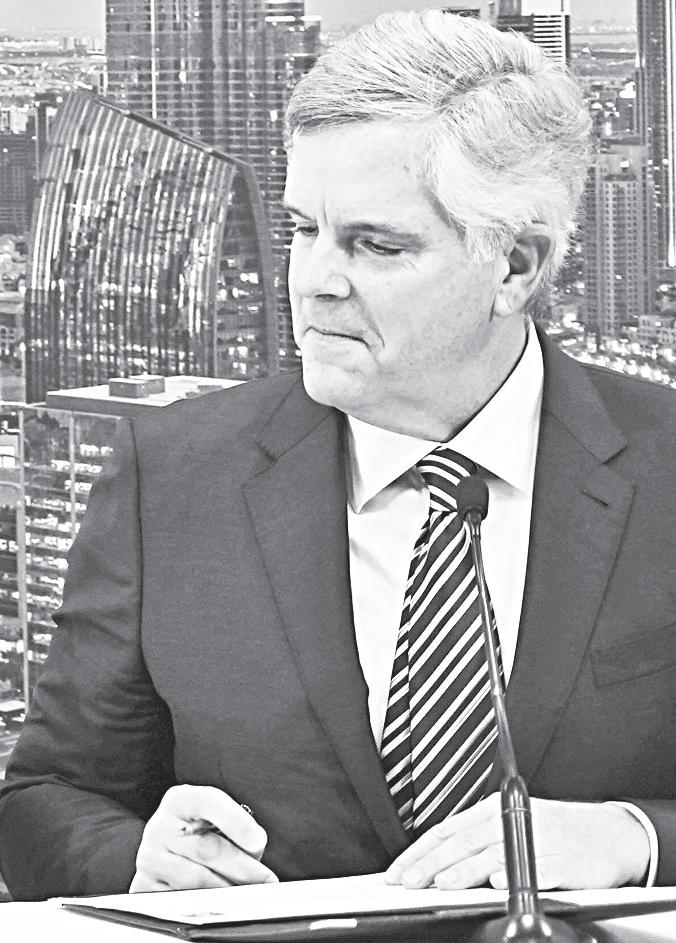
Other notable CEOs didn’t meet the criteria for inclusion the survey. Starbucks’ Brian Niccol received a pay package valued at $95.8 million, but he only took over as CEO on September 9. Nvidia’s Jensen Huang saw his compensation grow to $49.9 million, but the company filed its proxy after April 30. The pay gap
AT half the companies in AP’s annual pay survey, it would take the worker at the middle of the company’s pay scale 192 years to make what the CEO did in one. Companies have been required to disclose this so-called pay ratio since 2018.
The pay ratio tends to be highest at companies in industries where wages are typically low. For instance, at cruise line company Carnival Corp., its CEO earned nearly 1,300 times the median pay of $16,900 for its workers. McDonald’s CEO makes about 1,000 times what a worker making the company’s median pay does. Both companies have operations that span numerous countries. Overall, wages and benefits netted by private-sector workers in the U.S. rose 3.6% through 2024, according to the Labor Department. The average worker in the US makes $65,460 a year. That figure rises to $92,000 when benefits such as health care and other insurance are included.
“With CEO pay continuing to climb, we still have an enormous problem with excessive pay gaps,” Anderson said. “These huge disparities are not only unfair to lowerlevel workers who are making significant contributions to company value—they also undercut enterprise effectiveness by lowering employee morale and boosting turnover rates.”
Some gains for female CEOs FOR the 27 women who made the AP survey—the highest number dating back to 2014—median pay rose 10.7% to $20 million. That compares to a 9.7% increase to $16.8 million for their male counterparts. The highest earner among female CEOs was Judith Marks of Otis Worldwide, with a pay package valued at $42.1 million. The company, known for its elevators and escalators, has had operating profit above $2 billion for four straight years. About $35
million of Marks’ compensations was in the form of stock awards.
Other top earners among female



Sunday, June 1, 2025
By Bless Aubrey Ogerio
AGROWING push to mod -
ernize agriculture is transforming how the Philippines tills its land.
Mechanization, seen by the government as the solution to low productivity and labor shortages, is embraced through state-backed policies and programs—but every change has a cost.
During the recent “LakbayAgham: Catching up with Scientists in Nueva Ecija” held by the National Academy of Science and Technology Philippines, experts cautioned against pursuing mechanization without regard for regional labor conditions, saying that if left unchecked, the march of machines could roll over rural livelihoods.
Dr. Norvie Manigbas, chief science research specialist for plant breeding and biotechnology at the Philippine Rice Research Institute (PhilRice), said the effects of mechanization on farm employment are far from uniform.
“Actually, the repercussions of mechanized farming, of course, we have a lot of labor, so a lot will be displaced,” Manigbas said.
“There are those who don’t adapt to mechanized farming because there [is] a lot of labor that will be displaced,” he added. “But in the area where there is no labor, that’s where they really concentrate the mechanized farming.”
For years, provinces like Nueva Ecija, Isabela, Pangasinan, Cagayan, Iloilo, Camarines Sur, and Maguindanao have been at the heart of the country’s rice output.
On one hand, agricultural mechanization has been promoted
for a long time through legislation, such as the Agricultural and Fisheries Mechanization Act of 2013, aimed at spurring innovation, improving local manufacturing, and providing support services to help farmers adopt appropriate technologies.
Moreover, it led to the creation of the Bureau of Agriculture and Fisheries Engineering and the National Agriculture and Fisheries Mechanization Plan.
Yet, despite these pushes, rice farm mechanization saw only a modest uptick in horsepower per hectare over the past decade, according to data from the Philippine Center for Postharvest Development and Mechanization.
In addition, while some regions have advanced more rapidly, many areas still rely on manual labor for core tasks like planting and crop care.
Job loss? NOT everyone sees machines as a
threat to employment. Flordeliza Bordey, PhilRice deputy executive director for Special Concerns, offered a more hopeful view, at least when it comes to rice farming.
“At least for the rice industry, I think the loss of jobs is not affected,” Bordey said. “In fact, as the government is giving more support to the mechanization program, it actually improves the labor productivity.”
Even during the height of the Covid-19 pandemic, she noted, rice production continued and even thrived—proof, she said, that mechanization can coexist with a resilient workforce.
Yet, particularly on the year 2021, it went as one of the most challenging years for the agriculture sector in the country, because while it displayed resiliency at the start of the pandemic, the local farm sector eventually wobbled due to the economic impact of the pandemic and supply chain problems.
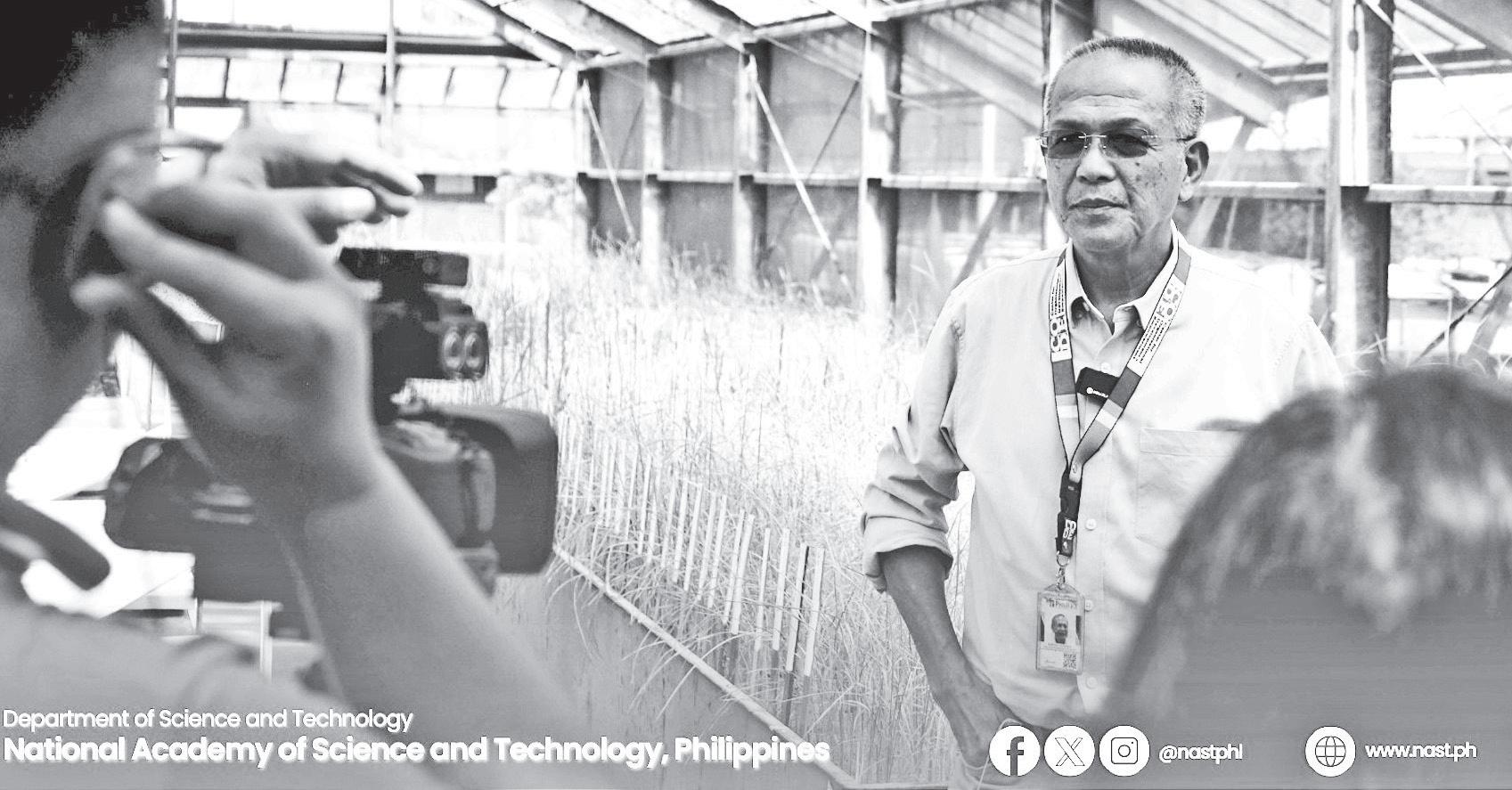
DR . Norvie Manigbas, chief science research specialist for plant breeding and biotechnology at the Philippine Rice Research Institute, is being interviewed by reporters during the recent “Lakbay-Agham: Catching up with Scientists in Nueva Ecija” by the National Academy of Science and Technology Philippines. NAST PHL FACEBOOK PHOTO
Still, she acknowledged that job shifts are more likely to occur in downstream sectors like processing and logistics rather than in field-level operations.
“The loss of jobs could be on the different sectors that needs more of the processing side… but not on the production side,” she said.
New kinds of farm work
THE future of rural employment may lie not just in the machines, but in experiences.
Dr. Jaime Manalo IV, research head of the Socioeconomics Division at PhilRice, believes agritourism holds untapped potential to generate jobs, especially for young people trained under the K-12 curriculum.
“What’s great about agritourism sites is that they don’t just hire farm workers. They also need tour guides, marketing people, hospitality staff—it’s an ecosystem,” Manalo told the BusinessMirror
Manalo emphasized the importance of strengthening school-industry collaborations, especially in agriculture-focused senior high school tracks.
“Retirees may be buying farms, but young people can run them— if they’re trained and ready,” he said.
The NAST PHL Lakbay-Agham visited PhilRice, the Philippine Carabao Center, and Central Luzon State University in Nueva Ecija.
Related story: https://businessmirror.com.ph/2021/01/07/ mechanization-moves-agriculture-sector-slow-but-sure-tomodern-farming/
FBy Rizal Raoul Reyes
ROM the remote mountains of Bukidnon, where opportunities are as scarce as dreams abound, Diwangan Jession of the Umajamnon community defied limitations with his own powerful vision. Through the PhilDev Science and Engineering Scholarship (PSES) program offered by the Philippine Development S&T Foundation Inc. (PhilDev), Jession was able to attend Xavier University-Ateneo de Cagayan, where he became the first engineering graduate from his tribe, earning cum laude honors.
The grants available through the PSES support students from partner universities across the Philippines, providing financial assistance, mentorship, and learning events to help them excel academically and professionally.
PhilDev is a nonprofit organization that operates at the intersection of education, innovation, and entrepreneurship dedicated to fostering long-term economic growth and development in the Philippines through science and technology.
Inspired by the life and work of Diodadao Banatao, a Filipino-American tech entrepreneur, PhilDev focuses on creating an ecosystem that supports education, innovation, and entrepreneurship in the STEM (science, technology, engineering, and mathematics) fields. PhilDev aspires to drive sustainable social and economic growth by empowering the next generation of leaders and innovators.
Today, Jession is a thriving test engineer at Analog Devices, and he understands the
transformative power of support. He is now paying it forward, nominating PhilDev’s PSES program for a grant to open doors for future STEM scholars, just as others once did for him.
“Every step is a tribute to my roots and the belief of those who invested in me,” Jession affirms. “My life proves that support turns dreams into reality.”
Bridging gaps
SINCE 2011, PhilDev has been working across several interconnected areas to achieve its mission, namely, education, innovation, and entrepreneurship.
The education rubric, which recognizes strong foundation in STEM, provides scholarships and learning opportunities for talented but financially constrained Filipino students pursuing degrees in STEM.
“PhilDev exists to bridge this gap, champion stories like Jession’s, and empower Filipinos to lead and innovate in STEM worldwide,” said Francisco Sandejas, PhilDev Board of Trustees chairman. “Jession’s journey is a testament to PhilDev’s impact.”
Investing in human capital
COMPLEMENTING this academic support is the Mentoring and Uplifting Leaders and Aspiring Trailblazers Program, a testament to the power of human connection and guidance. This volunteer-driven initiative acts as a compass for young scholars, pairing them with professionals from diverse fields.
Sandejas said they are dynamic exchanges where leadership qualities are honed, communication skills are polished, and personal well-being is nurtured.
Editor: Lyn Resurreccion • www.businessmirror.com.ph

THE Digital and Frontier Technologies for Health Program of the Department of Science and TechnologyPhilippine Council for Health Research and Development (DOSTPCHRD) showcases health innovations that tap artificial intelligence (AI), extended reality, and intelligent tools in developing innovations that address the country’s healthcare challenges.
During the Talakayang HeaRT Beat news conference held on May 27, DOST featured the i-Sulat (Intelligent Stroke Utilization, Learning, Assessment and Testing) of the University of Santo Tomas.
This software-based system employs intelligent handwriting stroke analysis to deliver consistent, automated assessments of handwriting proficiency in early childhood.
Science Secretary Renato U. Solidum, Jr. underscores the importance of leveraging digital health technologies as a strategic approach in building a more resilient, inclusive, and future-ready healthcare system.
“Through science, technology, and innovation, we are laying the groundwork for a healthier Philippines,” Solidum said.
Recognizing handwriting as a crucial developmental milestone tied to learning and neurological health, i-Sulat provides accessible, standardized assessment tools, particularly valuable in areas with limited occupational therapy resources.
Beyond early education, its applications extend to stroke rehabilitation, learning disabilities, and the diagnosis of neurological disorders.
Another breakthrough initiative that was presented is the development of Immersive Gamification Technology Systems (ImGTS), which consists of two projects.
It is designed to enhance rehabilitation for two distinct patient groups—children with
cerebral palsy and mobility limitations, and patients with Alzheimer’s disease experiencing behavioral psychological symptoms of dementia (BPSD). Currently undergoing clinical trials, these systems integrate interactive digital environments to improve therapy engagement.
The University of the Philippines Manila is leading the study on ImGTS for pediatric cerebral palsy rehabilitation, demonstrating how gamified experiences can support physical therapy. There is also research on ImGTS as a potential tool to mitigate BPSD in Alzheimer’spatients.
Now in Phase 2 of trials, both projects are being evaluated for usability, safety, and therapeutic value, offering much-needed support for caregivers and rehabilitation specialists.
Another initiative is the HealthPH Project, of the National University of Manila. It focuses on real-time surveillance of respiratory disease trends through machine learning and natural language processing. By analyzing social media discussions in English, Filipino, and Cebuano, the HealthPH dashboard enables proactive monitoring of emerging respiratory outbreaks. In collaboration with local government units across the country, the system strengthens public health response efforts, demonstrating how digital intelligence can reinforce disease prevention strategies.
DOST Undersecretary for Research and Development Dr. Leah J. Buendia emphasized the broader impact of these innovations.
She said: “Science and technology are our keys to providing solutions that can provide opportunities to improve and accelerate our health services.” Her message highlighted the vital role of science and technology in enhancing healthcare accessibility, monitoring, and equity.
ENGR . Mark Kennedy Bantugon, a trailblazing Filipino inventor from Batangas, is poised to make history as he competes among the world’s best and brightest young minds in the European Patent Office (EPO) “Tomorrow’s Shape: Young Inventors Prize 2025.”
A testament to Filipino ingenuity
BANTUGON’S journey shows the power of Filipino ingenuity, significantly bolstered by the support of DOST-TAPI. He has been a successful program proponent of DOST-TAPI, from competing in the National Invention Contest and Exhibits 2022 to the Science and Technology Promotion for International Contest and Exhibits, achieving victories, including awards at the 49th International Exhibition of Invention Geneva where received a bronze award, and landed gold at the 2024 Seoul International Invention Fair.
A distinguished program proponent of the Technology Application and Promotion Institute of the Department of Science and Technology (DOST-TAPI), Bantugon is one of the 10 talented individuals vying for the top honors, and the Philippines has a unique opportunity to advance him to victory through a global public vote. From harnessing the potential of a pili tree to develop a sustainable adhesive for the aviation industry, Bantugon, through his “Pili Adheseal” innovation, has been consistently elevating the profile of Filipino innovation on the global stage. His remarkable work has earned him the 2021 James Dyson Award and the distinction of being the first Filipino recipient of the World Intellectual Property Organization National Award for Inventor, the highest recognition given by the esteemed WIPO in Geneva, Switzerland.

Furthermore, his participation in the Consumer Electronics Show (CES) 2025 generated buzz, showcasing his innovative solutions to a global audience. His Pili Adheseal demonstrated immense market potential. It has promising bulk order opportunities, including 120,000 units in 2025 and 100,000 units in 2026 from CATL SG, LG (a secondary
battery innovation company) in South Korea, and Aptera Motors, an electric vehicle company in California. Both companies have also expressed interest in licensing the product.
Meanwhile, Metal Roof BV Canada has placed an order for 10,000 units for metal sheet applications. These investments are valued
at least $1.38 million (at $6 per product).
Bantugon needs vote in online Public’s Choice Award
THIS 2025, Bantugon’s Pili Adheseal is once again in the international spotlight, recognized by the EPO as a game-changer, aligning with the United Nations Sustainable Development Goals. The EPO’s Young Inventors Prize celebrates individuals under-30 whose inventions offer transformative solutions for a more sustainable future.
During the awards ceremony, the EPO will pay tribute and award the 10 inventors of Tomorrow’s Shape, with three special prizes to be presented by World Builders, Community Healers, and Nature Guardians.
The Public’s Choice Award, determined by an online vote, offers a chance for supporters worldwide to directly influence the outcome. The winner of the People’s Choice
Award will be revealed during the official ceremony in Reykjavik, Iceland. Filipinos and supporters of sustainable innovation worldwide are called to to unite and cast their votes for Bantugon. His supporters’ votes are crucial in helping him secure the Public’s Choice Award and bring this historic recognition home to the Philippines. How to Vote:
n Visit the official EPO Young Inventors Prize voting portal: https:// www.epo.org/en/news-events/ young-inventors-prize?size=n_15_n n Keep an eye on the official EPO social media channels for voting announcements: EPO’s Facebook: https://www.facebook. com/europeanpatentoffice Help us make noise for Engr. Mark Kennedy Bantugon and showcase the Philippines’
www.businessmirror.com.ph
By Lyn Resurreccion
First of two parts
THE specific contribution that St. Thérèse of the Child Jesus offers as a saint and a Doctor of the Church “is not analytical and scholarly.” It is more synthetic, “for her genius consists in leading us to what is central, essential and indispensable.”
Rev. Fr. Mariano Agruda III, OCD, Superior at St. Joseph Community in Jaro, Iloilo, and Provincial Delegate to the Secular Order of Discalced Carmelites (OCDS), said this in discussing the topic “St. Thérèse: Doctor of Love” at the recent Congress on Prayer II held at the Smart Araneta Coliseum in Quezon City.
Led by the Provincial Council of the OCDS, the event was hosted by the Order of Discalced Carmelites (OCD) Philippine Province of St. Teresa of Jesus. It marked the centennial of the canonization of St. Thérèse of the Child Jesus and the Holy Face. She was canonized on May 17, 1925.
The making of a Doctor of the Church
HOW are Doctors of the Church made?
What are the requirements? Is there a minimum or maximum age limit?
Father Agruda said currently there are 37 Doctors of the Church—four women and 33 men. “Eminent candidates” have been nominated for this “distinct honor,” he said.
Usually, the Doctors of the Church are best known for their “substantial and systematic writings” which shed light on “intellectual, spiritual and doctrinal” concerns, he added.
“Interestingly, in 1997, God raised up a person who was least expected to take her place among the Church’s Doctors. Throughout history, the great transformations and movements of renewal in the Church have always come outside the expected channels,” he said.
That person was St. Thérèse of the Child Jesus and the Holy Face—the youngest Doctor of the Church, who died at age 24.
The then-Pope John Paul II in his homily during the declaration of St. Thérèse as Doctor of the Church in Lisieux in October 19, 1997: “Of St. Thérèse of Lisieux, it can be said with conviction that the Spirit of God enabled her heart to reveal directly, to the men and women of our time, the fundamental mystery, the reality of the Gospel: the fact of having really received ‘a spirit of adoption as children that makes us cry out, Abba, Father.”
“The ‘Little Way’ is the way of spiritual childhood. This way contains something unique that is part of the


genius of St. Thérèse of Lisieux. At the same time, it holds a confirmation and renewal of the most fundamental and universal truth. For what truth of the Gospel message is more fundamental and universal than this: that God is our Father and we are His children,” added Pope John Paul II who was canonized on April 27, 2014.
The OCD friar said that although St. Therese had lived a quiet and hidden life as a contemplative Carmelite nun “who never wrote any impressive theological treatise or produced a systematic body of profound spiritual writings,” she was proclaimed a Doctor of the Church on the Centenary of her death in 1897.
Proclaiming her a “doctor,” St. Therese’s “perspective on the nature of the Christian life is faithful to the Sacred Scriptures and the living Tradition of the Church.”
“Although her writings and thoughts, like her spirituality, are marked by refreshing simplicity, her teachings are authoritative, universal and esteemed as a privileged reference point for believers seeking to advance and grow in faith, hope and love. Her distinctive personal adaptations of the language of Sacred Scripture to make us understand the movements of God in her soul are both winning and profound,” Father Agruda explained.
Pope St. John Paul II even referred to St. Therese, in his apostolic letter, Novo Millenio Ineunte (At the beginning of the new millennium), as an “expert in the science of love” discovering “new lights, hidden and mysterious meanings received from the divine Teacher, that science of love which she then expressed with particular originality in her writings.”
St. Therese science is the “luminous expression of her knowledge of the mystery of the Kingdom and her personal experience of grace, a special charism of Gospel wisdom attained in prayer.”
Pope St. John Paul II, likewise, called her “a Carmelite and an apostle, a teacher of spiritual wisdom for numerous consecrated and lay persons, patroness of the missions who occupies a place of primary importance in the Church, and whose doctrine merits finding a place among the most effective.”
Father Agruda mentioned that even Pope Benedict XVI, in his Catechesis in April 2011, acknowledged her “science of love,” saying that “trust and love illuminated the whole of her journey to holiness and enabled her to guide others along the same way.”
The OCD friar discussed the proclamation of St. Therese as Doctor of the Church as he lamented “the greatest tragedy of postmodern Catholicism” where the people “have become so distracted from the goal of the Christian life.”
He cited that “the great majority of Catholics do not even know the goal of the Christian life.”
“Others have cast the ideal aside, saying it is not attainable and realistic in the changing contexts of life today. Others don’t even mention it at all. Still others, water down the message. Tragically, we see this strong tendency today to ask less of Catholics than what the Gospel demands and to offer less to Catholics what the Gospel gives,” according to the friar.
To this, he declared: “Holiness is the goal of the Christian life and union with God is our fundamental purpose. The Gospel demands nothing less than total commitment.”
He added: “However, transformation is not something that we can attain for ourselves. It is what God does in us and not something we achieve or merit.”
“Holiness is first of all a gift before it is a task. Thus, the Gospel offers nothing less than the gift of the Holy Spirit. The truths of our Faith are meant to bring life, to cause the

release of the full power of the Holy Spirit in the lives of the faithful.
“Scripture and our spiritual tradition, particularly the wisdom of the Doctors of the Church teach us that the foundation of the fruitfulness of our life and work depends on the degree to which we have been ‘transformed in Christ,’ nothing less,” according to the OCD friar.
Thus, he credited the depth of our spiritual tradition from the great Doctors of the Church.
“As St. John of the Cross [a Doctor of the Church] points out with devastating accuracy and precision, the disorders in our heart, unless they are healed and purified by the action of the one true God, will leave us enslaved to our passions and unable to think clearly, decide wisely and live in a way worthy of our dignity as bearers of the image of God,” he said.
“Firmly grounded in Scripture and Tradition, the wisdom from these Doctors of the Church is among our greatest treasures,” he pointed out.
A Doctor for our times: A deeply wounded and divided world
POPE St. John Paul II canonized 482 persons during his 26-year pontificate and beatified more. However, he declared only one saint a Doctor of the Church—St. Therese of Lisieux.
Despite being the youngest Doctor of the Church, St. Therese’s “ardent spiritual journey shows such maturity and the insights of faith expressed in her writings are so vast and profound that they deserve a place among the great spiritual masters,” John Paul II said.
She lived closest to our time, Father Agruda noted. Two of her blood sisters—Pauline (Mother Agnes) and Celine (Sister Genevieve)—died in their 90s. Imagine if she lived to be 90, St. Therese would have died in 1963, the time the Second Vatican Council was in session.
The timing for her doctorate is
profoundly providential, the friar said, because “her wisdom is badly needed for a deeply wounded and divided world.”
“St. Thérèse speaks in a language of Hope we understand. Her message is not simply positive thinking and optimism. Far from blocking a clear seeing and acceptance of the severity of our problems and sins, she confronts these realities head-on,” the friar pointed out.
“Authentic Hope,” according to Father Agruda, has nothing to fear from facing the truth squarely for it is a Hope founded in Jesus’ victory over sin and death. It is based on the certain promises of Christ.
“Her Hope is not wishful thinking. It does not excuse negligence. It deals with sin by acknowledging it as such. It doesn’t deny it nor flee from ethical responsibility. Her Hope made her approach the throne of Grace with confidence, receive Mercy and embrace conversion of heart,” he explained.
“Through her person and teaching, God provides the much needed medicine to treat the wounds of our time. Our times call for a particular type of doctor to treat our maladies, one who can adequately respond to the hopelessness we feel in the face of many complex challenges and complicated situations,” he added.
Swiss psychologist Carl Jung described this predicament: ‘“Only the wounded doctor heals…and then only to the extent he has been healed.’”
The friar said like all of us, St. Thérèse was a deeply scarred person. “She suffered difficulties and struggles like people today.”
She experienced bouts of depression and burdensome anxiety. She battled with neurosis and panic attacks. The loss of a mother to breast cancer at a tender age left an emotional wound that affected her deeply all her life.
Like an ordinary human, St. Therese was an object of gossip and
intrigue in her religious community; she carried the heavy burden knowing that her beloved father was gradually losing his mind due to a mental illness until his confinement in a mental institution the locals called a “madhouse.” Her slow death by tuberculosis aggravated her sensitivities and anxieties.
“She was even tempted to commit suicide in the last desperate moments of a long illness,” he noted.
“During the dark night of her soul, she stared straight into the eyes of atheism. Her astute intelligence recognized the force of its arguments, and feeling unequipped to answer them adequately, she simply had recourse to a fierce and unyielding faith,” Father Agruda pointed out.
She suffered physical, mental and emotional turmoil throughout her life. But the saint admitted that “we have to experience something to ‘know what it is,’” he said. It could be seen from her writing “the degree to which she advanced quickly in the spiritual life by embracing the givens in her life, discerning in each one the presence of God.”
“During her last years, she found great comfort in her devotion to the Lord’s Holy Face. Facing these difficulties head on, this ‘scarred Doctor’ peacefully witnessed to Hope in the face of despair,” he said.
Father Agruda said we live in a world and the Church in which “brokenness and fragility are becoming the rule rather than the exception,” where people live with skeletons in the closet—such as a broken marriage, an experience of abuse, a religious commitment that did not work out, a betrayed trust, a broken friendship, a secret affair, a serious mistake, a searing regret—“sometimes with a sense of sin, many times without it.”
This brought the friar to say: “What we need today, perhaps more than anything else, is a theology of brokenness, a spirituality of imperfection that relates failure, limitation and sin to redemption, healing and sanctity.”
“We need a way that allows for mistakes. Too often, what is taught as holiness and redemption is a little more than the strict law of karma: one chance and no more, salvation is getting it right, holiness comes only with a perfect score brutally uncompromising. Ultimately we look at the mixed up reality of our sins and infidelities and somehow believe the loss of grace is irrevocable and that we have used up our chances, let alone seventy times seven times,” he added, referring to the verse Matthew 18:22, emphasizing that forgiveness should be given without limit. To be concluded
By Edwin P. Galvez
HAPELS inside the malls have become anchors

its Our Lady of the Most Holy Rosary chapel located at The Block (fourth level)—with the blessing and opening of the MOA Sanctuary on May 5. “Nestled in the tranquil corner” of the sprawling rooftop park of the mall called the MOA Sky, the glassenclosed oval religious gallery or exhibit hall allows for transparent and well-lit views of its outdoor spots, which includes the globes of light for the “Holy Rosary walk,” secluded pocket gardens, and a serene grass lawn with an enclosed pond at the center.
Highlighting the opening of the MOA Sanctuary is a Marian exhibit titled “Mahal na Birhen, Kaisa sa Lakbay ng Pag-asa” (The Blessed Virgin Our Pilgrim-Companion in Hope), which showcases 28 images of Mary under her different titles. Among the images was that of Nuestra Señora de Guia, which was “present” at the Mass presided by the late Pope Francis at the Quirino Grandstand on January 18, 2015.

A journey of hope with Mary THE inaugural exhibit, organized in collaboration with the Archdiocesan Liturgical Commission of Manila and the Miraculous Medal Apostolate of the Philippines, can be viewed until July 25.
“This exhibit is more than just a display; it is a spiritual journey alongside Mama Mary, our beloved mother. We thank the Lord for the gift of the Blessed Mother who was entrusted
to us by Jesus Christ on the cross,” Catholic Bishops’ Conference of the Philippines Episcopal Commission on Liturgy Executive Secretary Rev. Fr. Genaro O. Diwa, SLL, said in his opening remarks.
“But also in a special way, we thank the Lord for ‘Nanang,’ Mrs. Felicidad Sy, whose love for the Blessed Mother is so great that this museum and gallery has been constructed to enshrine
religious and spiritual realities of the church,” Father Diwa added.
“Our country is called Pueblo Amante de Maria, a people in love with Mary, and the images from this exhibit at their shrines all over the country would testify to this great love that we have for Mary,” The Miraculous Medal Apostolate-Philippines Director Rev. Fr. Rolando F. Limjoco Jr., CM, said.
Father Limjoco, national priest advisor of Children of Mary Immaculate Philippines, said that “more than these beautiful images, our devotions and practices, we are invited to learn from Mary’s life of complete obedience and surrender to the will of God.”
“As pilgrims of hope, we are challenged to be like Mary who borne and gave Jesus to the world,” he said.
Fr. Limjoco, who curated the exhibit, said that lined up between July to October this year are exhibits on the Sacred Heart of Jesus and Saint Therese of Lisieux, in celebration of the “350 years of apparition of the Sacred Heart and the 100th canonization anniversary of St. Therese.”
SACRED spaces like the MOA Sanctuary offer refuge or retreat to practice devotion and holiness.
“The Church really encourages popular devotion. Although we know the importance of liturgy, that nothing can replace or substitute [it], the Church [also] realizes and sees the power of popular devotion that can help us to celebrate the liturgy. Because popular devotions are really from the expression of people’s faith,” Father Diwa told the BusinesMirror
“It’s not a contradiction of liturgy nor the doctrine of the church, but the auxiliary role of popular devotion, for example, during the month of May, all of these devotional actions of offering flowers highlight the liturgical prayers of the Church, of honoring the Blessed Mother as the handmaid of the Lord. They do not contradict, but popular devotions are encouraged to be connected to the liturgy. That is our main role,” he explained.

A10 Sunday, June 1, 2025

By Tammy Webber
THE landslide that buried most of a Swiss village this week is focusing renewed attention on the role of global warming in glacier collapses around the world and the increasing dangers.
How glaciers collapse—from the Alps and Andes to the Himalayas and Antarctica—can differ, scientists say. But in almost every instance, climate change is playing a role.
In Switzerland, the mountainside gave way on Wednesday near the village of Blatten, in the southern Lötschental valley, because the rock face above the Birch Glacier had become unstable when mountain permafrost melted, causing debris to fall and cover the glacier in recent years, said Martin Truffer, a physics professor at the University of Alaska Fairbanks who studies how glaciers move. While the debris insulated the glacier and slowed melting, its weight caused the ice to begin moving—which accelerated dramatically a few weeks ago.
Authorities ordered the evacuation of about 300 people, as well as all livestock, from the village in
recent days, “when it became clear that there’s a whole mountainside that’s about to collapse,” said Truffer, who is from Switzerland.
Glacial lakes pose threat LAKES that form at the base of glaciers as they melt and retreat also sometimes burst, often with catastrophic results. Water can even lift an entire glacier, allowing it to drain, said Truffer, adding that Alaska’s capital of Juneau has flooded in recent years because a lake forms every year on a rapidly retreating glacier and eventually bursts.
In 2022, an apartment building-sized chunk of the Marmolada glacier in Italy’s Dolomite mountains detached during a summer heat wave, sending an avalanche of debris down the popular summer hiking destination, killing 11. A glacier in Tibet’s Aru mountain range suddenly collapsed in 2016, killing nine people and their

livestock, followed a few months later by the collapse of another glacier.
There also have been collapses in Peru, including one in 2006 that caused a mini tsunami; most recently, a glacial lagoon overflowed in April, triggering a landslide that killed two.
“It’s amazing sometimes how rapidly they can collapse,” said Lonnie Thompson, a glacier expert at the Ohio State University.
“The instability of these glaciers is a real and growing problem, and there are thousands and thousands of people that are at risk.”
Scientists say melting glaciers will raise sea levels for decades, but the loss of inland glaciers also acutely affects those living nearby who rely on them for water for drinking water and agriculture.
No way to stop the melting SCIENTISTS say greenhouse gases
UNITED NATIONS—The world’s nations are gathering in France next month to tackle what the United Nations calls a global emergency facing the world’s oceans as they confront rising temperatures, plastic pollution choking marine life, and relentless overexploitation of fish and other resources.
The third UN Ocean Conference aims to unite governments, scientists, businesses and civil society to take action and raise money to address these and other crises facing the oceans and the people who rely on them for their survival.
Conference Secretary General Li Junhua told reporters on he hopes it will not be another routine meeting but “the pivotal opportunity” to accelerate action and mobilize people in all sectors and across the world.
The conference, co-sponsored
by France and Costa Rica, takes place in Nice on the French Riviera from June 9 to June 13. It is expected to bring together more than 60 world leaders, dozens of ministers, about 4,000 government officials and 6,000 members of civil society, Li told The Associated Press.
Costa Rica’s UN Ambassador Maritza Chan Valverde said accelerating action to conserve and use the ocean sustainably “means cutting decision-making time from years to months” and engaging all 193 UN member nations, more than 1,000 cities and over 500 corporations simultaneously.
“What is different this time around?,” she said. “Zero rhetoric. Maximum results.”
Valverde said she expects participants to make commitments totaling $100 billion in new funding to address the crisis facing the oceans.
France’s UN Ambassador Jérôme Bonnafont said his country’s priorities for the conference include obtaining 60 ratifications for the treaty to protect biodiversity in the high seas adopted in March 2023 so it goes into effect.
The treaty’s mission is to ensure sustainable fishing, mobilize support to protect and conserve at least 30 percent of the oceans’ waters, fight plastic pollution, “accelerate decarbonization” of maritime transportation and mobilize financing.
Conference participants are expected to adopt a declaration that says action is not advancing fast enough to address the impact of “the triple planetary crisis of climate change, biodiversity loss and pollution.”
“We underscore the central role of a healthy and resilient ocean in sustaining life on Earth, ensuring global food security,
and supporting billions of lives,” the final draft says.
It supports new scientific research to meet the challenges of climate change and improve the scientific understanding of the oceans. It does not address the issue of deep-sea mining because a consensus could not be reached, Li said.
The Trump administration said last week that it will consider selling leases to extract minerals from the seabed off the South Pacific island of American Samoa, a potential first step in a wider industry push to allow deep-sea mining, which environmentalists oppose because they say it could irreparably harm marine ecosystems.
The declaration and voluntary commitments from governments and all sectors are expected to become the Nice Ocean Action Plan.
Edith M. Lederer/Associated Press
SUSTAINABILITY-DRIVEN innovation not only impacts a company’s bottom line, it also ultimately enhances the experience and well-being of its customers.
Recognizing the group’s efforts to deliver more reliable, resilient, and environmentally responsible services to its customers, PLDT and Smart Communications were recently honored with the Success Story Award by the Pollution Control Association of the Philippines, Inc. (PCAPI). At PCAPI’s 45th National Annual Convention and General Assembly recently held in Cagayan de Oro, Misamis Oriental, in coordination with the Environmental Management Bureau of the Department of Environment and Natural Resources, representatives from the Property and Facilities Management office of PLDT and Smart received the award.
“We are grateful for this Success Story Award from PCAPI,
Switzerland, which has the most glaciers of any country in Europe, saw 4 percent of its total glacier volume disappear in 2023, the second-biggest decline in a single year after a 6-percent drop in 2022.
A 2023 study found that Peru has lost more than half of its glacier surface in the last six decades, and 175 glaciers disappeared due to climate change between 2016 and 2020, mostly due to the increase in the average global temperature.
A study published on Thursday in Science said that even if global temperatures stabilized at their current level, 40 percent of the world’s glaciers still would be lost.
But if warming were limited to 1.5 degrees Celsius (2.7 degrees Fahrenheit)—the long-term warming limit since the late 1800s called for by the 2015 Paris climate agreement—twice as much glacier ice could be preserved than would be otherwise.
from the burning of fossil fuels such as coal have already locked in enough global warming to doom many of the world’s glaciers— which already have retreated significantly.
For example, glaciers in the Alps have lost 50 percent of their area since 1950, and the rate at which ice is being lost has been accelerating, with “projections ... that all the glaciers in the Alps could be gone in this century,” Thompson said.
Even so, many areas will become ice-free no matter what, said Truffer, the University of Alaska expert.
“There’s places in Alaska where we’ve shown that it doesn’t take any more global warming,” for them to disappear, Truffer said. “The reason some...[still] exist is simply because it takes a certain amount of time for them to melt. But the climate is already such that they’re screwed.” AP
PHL poised to take lead in ocean conference with new high seas treaty
THE Philippines is gaining renewed focus as the international community gears up for the third UN Ocean Conference in Nice, France on June 9.
Central to this discussion is the United Nations’ Biodiversity Beyond National Jurisdiction (BBNJ) Agreement, commonly known as the High Seas Treaty.
Adopted in June 2023 after over two decades of negotiations, this Treaty marks a pivotal moment in global efforts to protect marine life in the vast, ecologically vulnerable regions of the ocean that lie beyond national jurisdiction, covering nearly two-thirds of the world’s ocean surface.
In support of the treaty, the High Seas Alliance and Oceana held a legislative forum on May 28 at the Conrad Hotel to emphasize the urgency of ratification. They are advocating for the Philippine Senate to approve the necessary concurrence for the country to ratify the treaty.
The BBNJ Agreement is the first legally binding international accord dedicated to the conservation and sustainable use of marine biological diversity in the high seas.
for the Philippines that is recognized as one of the world’s 17 megadiverse countries. These provisions ensure that monetary and non-monetary benefits, such as access to samples and enhanced scientific cooperation, are shared equitably. A notification system and digital tracking are in place to promote transparency and accountability in the use of these resources. Importantly, the treaty also stresses the necessity of capacity building and technology transfer, which are crucial for developing nations.
For the Philippines, this means improved access to technical support, training, and tools necessary for marine science and monitoring compliance. Such resources will assist in implementing and managing high-seas marine protected areas, ultimately benefiting from the healthy ocean ecosystems that provide essential services, such as climate regulation, food security, and livelihood support.
The Philippines’ active participation in the treaty’s implementation is vital to ensure that the perspectives of the archipelagic nation are reflected in the decision-making processes both before and during the first Conference of Parties.

Historically, these areas have suffered from fragmented management and a lack of coordinated regulations, making them susceptible to overexploitation, pollution, and the escalating threats posed by climate change.
The treaty aims to tackle these issues by establishing a framework for creating marine protected areas, conducting environmental impact assessments, and ensuring fair sharing of benefits from marine genetic resources.
REPRESENTATIVES from the Property and Facilities Management office of PLDT and Smart recently receive the “Success
as it recognizes not only our renewable energy projects but also the rest of our collaborative efforts. Our investments in renewable energy initiatives and resource-efficient operations translate into greater service continuity, reduced environmental impact, and a stronger commitment to safeguarding the communities that we serve. It also highlights how environmental excellence is inseparable from customer care,” said Engr.
Kristine Gonzalez-Catague, head of Corporate Environment, Health, and Safety Center at PLDT and Smart.
Themed “Moving Beyond Compliance: Reinforcing Our Role in Keeping the Balance in Nature,” the PCAPI convention gathered environmental professionals and advocates from across the country to celebrate achievements and share best practices in environmental protection and sustainability.
This recognition reinforces
PLDT and Smart’s commitment to sustainability and environmental stewardship, aligning with their broader mission to build a more resilient and eco-conscious future for the Filipino people. It also supports PLDT and Smart’s commitment to the United Nations Sustainable Development Goals (SDG), particularly SDG 7 (Affordable and Clean Energy), SDG 11: Sustainable Cities and Communities, and SDG 12: Responsible Consumption and Production.
For the Philippines, a nation renowned for its rich marine biodiversity, the treaty offers numerous avenues for engagement and benefits. The mechanisms for scientific research, data access, and participation in global knowledge repositories are especially advantageous.
French Ambassador to the Philippines, Marie Fontanel, emphasized that “in Nice, we look at obtaining 60 ratifications. There is room for optimism in the next two weeks. The Philippines’ ratification is of utmost importance and the country’s diplomatic agenda as a champion of international law is very aligned and coherent with the BBNJ.”
The treaty’s provisions regarding marine genetic resources are particularly pertinent
The country’s strong involvement in prior negotiations has already established it as a leader in high seas advocacy, and continued engagement is expected to play a crucial role in the future of global ocean governance.
Rizza Sacra-Dejucos, Asia Regional Coordinator for the High Seas Alliance, stressed the significance of the treaty for both the Philippines and the region: “By ratifying the treaty, the Philippines will reaffirm its leadership in marine conservation, strengthen regional cooperation, and gain access to new scientific, technological, and financial resources. This will ensure that the Philippines has a voice in shaping the future of global ocean governance, impacting the generations to come.”
With 115 signatories and 22 ratifications to date, the treaty is progressing toward the 60 ratifications required for entry into force.
Achieving this milestone is critical, as it would trigger the formal implementation of the BBNJ Treaty, enabling participating countries to propose, adopt, and implement marine protected areas in the high seas. This progress is essential for safeguarding our oceans and the myriad lifeforms they support.



THE pandemic tested the media industry, forcing newsrooms around the world to overhaul the way they do their job while following strict health protocols in order to survive a deadly infection.
The BusinessMirror, the country’s premier national business daily, was tested like everyone else, and survived, even continuing to live up to its promise to provide a broader look at today’s business.
In November 2021, the business broadsheet was recognized as the “Business News Source of the Year” for 2020 by the Economic Journalists Association of the Philippines (Ejap), the country’s premier organization of business reporters, editors and wire agencies. It was a 4-peat for BM, having gotten the same honors for the years 2017, 2018 and 2019.
And, as in the past Ejap awards, it also swept half of the individual categories, with its seasoned reporters adjudged as best in their respective coverages.
Earlier in 2021, the BusinessMirror was given the Pro Patria Award by the Rotary Club of Manila, for “its commitment of valuable resources for the protection of free expression and its resilience in disseminating fair and truthful information resulting in an informed and enlightened citizenry.”


It was just the latest recognition from the prestigious Rotary Club, which named it “Business Newspaper of the Year” for 2018-2019, and again in 2020. In all, it has received six top

Rotary journalism awards in its short 16-year existence.
The BusinessMirror has also consistently reaped top awards in the Brightleaf Journalism Awards for Agriculture and the Philippine Agricultural Journalists-San Miguel Corp. (PAJ-SMC) Binhi Awards, also for the best in agriculture journalism.
The BusinessMirror was also repeatedly adjudged the leading daily in biotechnology journalism, a recognition bestowed by the Jose G. Burgos Jr. Biotechnology Journalism Awards.
The “broader look” mantra also drew recognition from the Philippine Statistics Authority (PSA) which named the BusinessMirror, at its first awards rites in 2018, as the inaugural “Data Champion.”



In the first “Bantog Science for the People” awards for media from the Department of Science and Technology, the BusinessMirror got the top award for the Institution category for Print; and the grand prize in the individual category for science journalist Stephanie Tumampos.
In 2018, Environment Reporter Jonathan Mayuga received the Luntiang Aligato award from the Climate Reality Project, a nonprofit organization founded by Nobel Laureate and former US Vice President Al Gore.
The Broader Look at biodiversity was also recognized. It was named among the Asean Champions of

Biodiversity, for the Media Category, by the Asean Centre for Biodiversity. The Broader Look also extended to the paper’s corporate social responsibility. It organized and staged the first-ever recognition rites for the best of the Philippines’s friends in the world, with the “MISSION PHILIPPINES: The BusinessMirror Envoys & Expats Awards.” The initiative won a Gold Anvil in 2019. Distinguished institutions in government have also repeatedly recognized the BusinessMirror’s role in spreading the word about the work they do—information that shines a light on good governance and committed public service to uplift people’s hopes. Most notably, these are the Social Security System and Pag-IBIG Fund. Sixteen years, two of them in a pandemic, have tested the promise of a Broader Look. But they are also a measure of the unstinting support of friends—advertisers and news sources alike—and readers who continue to believe in that promise.
THANK YOU, EVERYONE. YOUR LOVE AND SUPPORT IS OUR MOST IMPORTANT TROPHY.


PARIS—If more tennis players find themselves breathing easier, it might just be thanks to Carlos Alcaraz
The four-time Grand Slam champion, whose bid for a second consecutive French Open title was scheduled to continue with a third-round match Friday night, has often worn a nasal strip in matches since last season—although not during his first two contests at RolandGarros this week—and the sport›s other athletes took note.
After all, if Alcaraz finds something useful on the court, their thinking goes, maybe it makes sense to give the adhesive bands a shot.
“I saw Carlos playing in it,” said 18-year-old Mirra Andreeva , a semifinalist in Paris last year and the No. 6 women’s seed this time. “I’d be pretty interested to try and see if there is really a difference. If he plays matches in it, then probably there is.”
At the 2024 season-ending Association of Tennis Professionals Finals last November, Alcaraz said: “It is something that I’m going to wear more often. I could recover better between points.”
Once associated with Pro Football Hall of Famer Jerry Rice and soccer stars like Cristiano Ronaldo and Neymar, the bands, which essentially look like a Band-Aid worn across the bridge of the nose, are popping up on tennis courts—sometimes out of necessity, sometimes out of curiosity. They are designed to open the nostrils slightly, making it easier to breathe through the nose. Originally marketed to reduce snoring, they’re being embraced to enhance air intake during physical exertion.
The idea is simple: Better breathing could mean better oxygen intake. In practice, the science is less convincing.
In 2021, Brazilian academic Ricardo Dinardi reviewed more than 600 studies on nasal strips and found they didn’t make a real difference in how much air athletes took in, their heart rate or how strenuous exercise felt.
“The effect on athletic performance is mostly placebo,” Dinardi said. “But in elite sports, even perceived benefits can count.”
Three-time major finalist Casper Ruud , who wore the strips in matches earlier this year, knows the evidence is shaky. But he still liked using them— both on the court and while sleeping. Like Alcaraz, Ruud did not wear one in Paris before his second-round exit.
But he has been testing a prototype of a different version.
“I tried out a device that’s very early in development. It will be a bit more comfortable to wear, because it’s inside the nose and it looks like I have this bullring under,” said Ruud, who was the runner-up at Roland-Garros to Rafael Nadal in 2022 and Novak Djokovic in 2023. “It will return, don’t worry.” For other players, like Nicolás Jarry, the strips are more than a trend— they’re a necessity.
After nasal surgery in 2020, the Chilean still needed help to draw air into his nose, so he puts them on for every practice and every match he plays.
“Without it, I cannot breathe. My nostrils shut when I try,” he said, inhaling to demonstrate for a reporter. “Others don’t have that issue and still use them.”
Jarry definitely has noticed a recent spike in interest among players. He said that even though he’s worn the strips for years, including at this French Open, other competitors on tour never asked about them—until Alcaraz started wearing one last year, sometimes in black, sometimes in pink.
“Others have asked me, and many are trying it,” said Jarry, who sported a beige-colored strip in Paris. “But before him? Nothing.” AP

A12 SundAy, June 1, 2025
mirror_sports@yahoo.com.ph
Editor: Jun Lomibao

Week-long gap between games: Will it help, hurt Thunders’ goal
OKLAHOMA CITY—

By Howard Fendrich The Associated Press
PARIS—Casper Ruud is hardly an up-and-comer simply trying to make his way—and a living—in professional tennis.
He’s a three-time Grand Slam finalist, ranked No. 8, the owner of more clay-court victories than any other man since 2020 and someone who’s earned nearly $25 million in prize money.
And yet Ruud felt the need to play through pain for the better part of two months, right up until the moment the left knee that’s been swollen from a build-up of fluid, that’s prompted him to pop pills, that’s ached every time he slides into an open-stance backhand, became too problematic during a French Open second-round match. He didn’t stop, but he did drop 13 of the last 14 games in a loss Wednesday. Afterward, the 26-year-old Norwegian voiced concerns, also expressed this week by other players, that there is an overwhelming sense of obligation to take the court as often as possible, no matter one’s health, thanks to a schedule and a

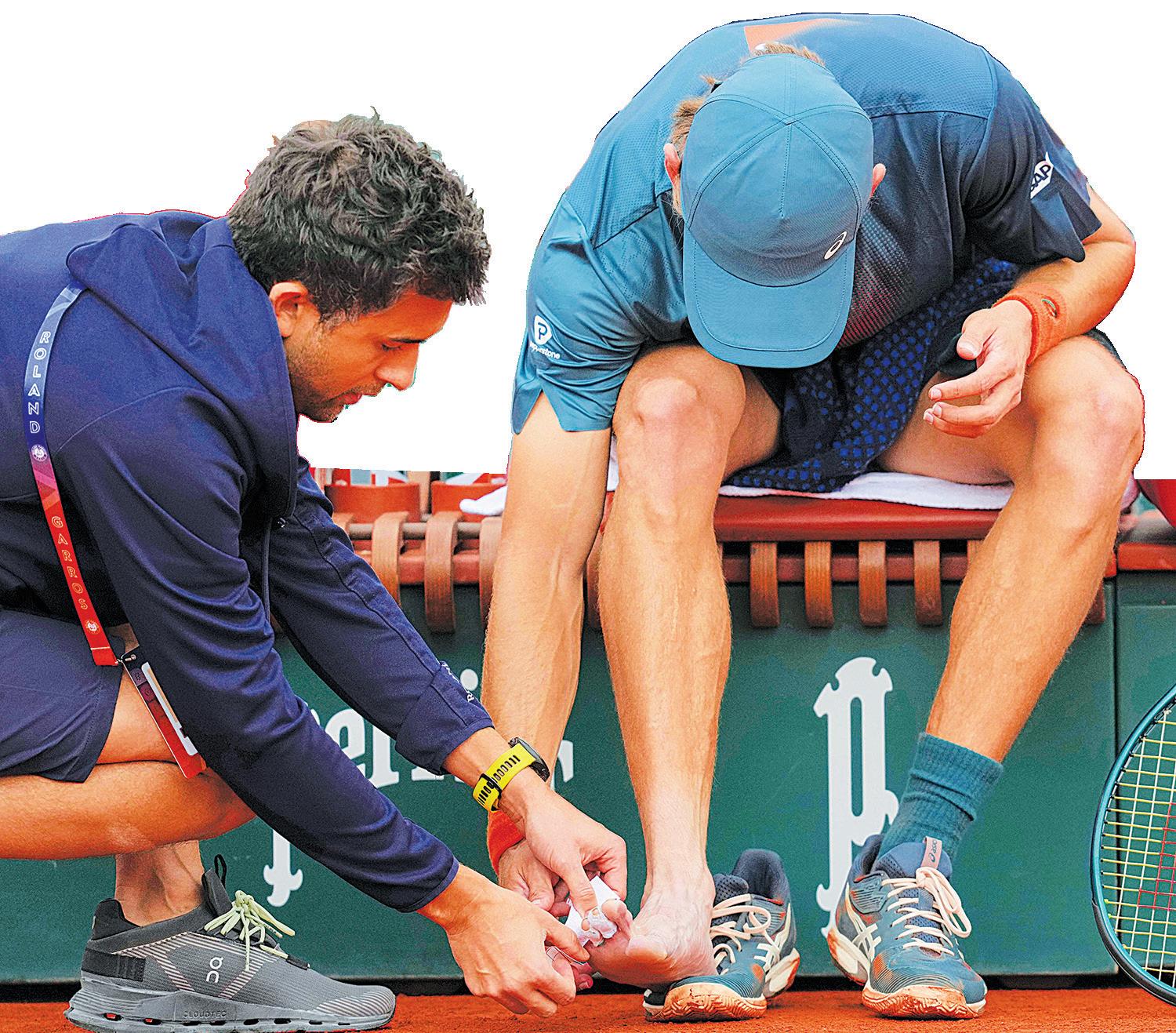
system Ruud called a “rat race.”
“You feel like you lose a lot if you don’t show up and play, both economically, point-wise, rankingwise and opportunity-wise,” Ruud said, noting that skipping one mandatory event brings a 25% cut to a year-end bonus on the men’s tour. “You’re kind of forcing players to show up injured or sick.”
Tennis players wonder if pushing their bodies to extremes is a good idea.
Caroline Garcia , a 2022 US Open semifinalist who announced this is her last season as a pro, wrote in a social media post that she relied on a steady diet of anti-inflammatories, corticoid injections and plasma treatments to deal with a bum shoulder.
The 31-year-old from France wondered aloud: “Is it truly worth pushing our bodies to such extremes?” She spoke in Paris about the stresses of trying to maintain one’s ranking and “the responsibility” of performing for one’s entourage.
“I can feel what she feels,” said Alexander Zverev, a three-time major runner-up. “The thing is, with us tennis players, it’s a 1-on-1 sport, so we get the blame all the time, right?”
Unlike in team sports, there are no substitutions at the French Open.
Ajla Tomljanovic , who handed Serena Williams the last loss of her career, summed it up this way: “I don’t think playing with pain is smart, but I’ve done it before. Sometimes it was rewarded, and sometimes it wasn’t.”
Emma Raducanu, the 2021 US Open champion , said she kept entering tournaments a couple of seasons ago despite problems in both wrists that required surgery.
People around her at the time, Raducanu said, “were telling me I wasn’t tough enough, like I need to just work through it, like it’s normal I’m feeling fatigued because I’m training so much. When in reality, I knew there was pain, and I knew it kind of felt more than just soreness. So I wish I would have listened to myself sooner.”
Australian Open champion Madison Keys said Garcia’s post resonated.
“She’s right. At some point, you just have to say, ‘I’m done.’ And like she said, it’s something that we learn from a really young age,” Keys said. “Everyone applauds [National Basketball Association star Michael] Jordan for playing with the flu...and somehow it was a better achievement because he pushed through it. Obviously, it was incredible that he was able to do that while ill, but I
don’t think you always need to.”
At Roland-Garros, playing through pain is common.
On Wednesday, Tommy Paul, an American seeded 12th in Paris, wasn’t quite sure what was wrong in his lower abdominal area, but he knew it didn’t feel right during his second-round match. He was visited by a trainer, who couldn’t do much to help. Paul played on, wound up winning in five sets, and planned to get an MRI exam Thursday.
“I’m going back out to play,” Paul said, “for sure.”
In another match, Damir Džumhur of Bosnia tumbled to the clay, hurting his knee. He, too, continued, won to set up a showdown with defending champion Carlos Alcaraz , and declared:
“If it’s just a bruise—if I cannot make it worse—then I can play.”
Tennis is a non-contact sport, of course, so the perils are not the same as in the National Football League, say. Still, Ruud estimated something is physically wrong with him in more than half his matches—“whether that’s just a small blister under your foot or maybe a little soreness in your stomach, rib, back, knee, whatever.”
“Every part of my body,” he said, “has felt some kind of pain.”

The Oklahoma City Thunder have a week off before playing again in the National Basketball Association (NBA) Finals. How the Thunder, who defeated the Minnesota Timberwolves, 4-1, in the Western Conference finals, handle that stretch could set the tone for the championship series against either the Indiana Pacers or New York Knicks that starts June 5 in Oklahoma City.
Thunder coach Mark Daigneault expects his young players to handle the situation just like they’ve handled everything else that’s been thrown at them this season.
“They’re highly professional, consistently professional,” he said.
“They’re high-character people. They come from high-character circles. They’re unbelievably competitive. They put the work in behind it consistently through the ups and downs. And most of all, they are team first.”
The Thunder have had long breaks between games during the playoffs the past two years, with mixed results.
They swept the New Orleans Pelicans in last year’s first round, then beat Dallas, 117-95, at home in Game 1 of the conference semifinals after waiting eight days between games. The Thunder eventually lost that series , 4-2.
After this year’s series against Memphis, the Thunder were in a similar situation. Denver’s first-round series against the Los Angeles Clippers went seven games, so Daigneault gave the players some extra rest since there were nine days between games. The focus for the team was less on an opponent at first and more on finetuning his team’s issues.
“I mean, really just reinforcement of fundamentals,” he said heading into the Denver series. “The game defensively is going to come down to transition D [defense], it’s going to come down to individual D, help D, coverage, communication, closeouts, rebounding. So we’re looking at the series through that lens. And then offensively, [we’ll take] all the fundamentals on that end of the floor that transcend each coverage and pull it up.”
The Thunder lost to Denver, 121-119, at home in Game 1 of the conference semifinals, but came back and won Game 2, 131-80, and eventually won the series, 4-3.
Daigneault’s team learns well on the fly, so no experience is wasted for the squad that posted a league-best 68-14 record in the regular season.
“This team, as they’ve always done, they just internalize the experience,” he said. “They strip the emotion, they learn the lesson and then they compete presently in the next moment. And that’s why we improved at the rate that we have.” AP


JUNE 1, 2025 | soundstrip.businessmirror@gmail.com
Story
and
photos by Vincent Peter Rivera
Fresh off the heels of their latest EP release, the energy surrounding PPOP Kings SB19 shows no signs of slowing down. Just a week before they were set to ignite the stage for a two-night kickoff concert at the Philippine Arena, the group offered fans a special glimpse into their world with the opening of “The Simula at Wakas Experience.”
OfficiallyunveiledatL4GatewayMall2onMarch23,The SaWExperienceoffersacompletejourneybeyondthetracksof SB19’s Simula at Wakas through an immersive and exclusive walkthrough on the EP’s creative process, never-before seen photos, and behind-the-scenes snapshots.
SB19’s sub-vocalist and creative director Justin revealed that it is the group’s long-held dream to create a museum-like experience for A’TIN to fully share their music and lore in the most engaging way possible.
“For Simula at Wakas, kasama sa concept namin

Publisher :
T. Anthony C. Cabangon
Lourdes M. Fernandez
Editor-In-Chief :
Concept :
Aldwin M. Tolosa
Y2Z Editor :
SoundStrip Editor :
Group Creative Director : Graphic Designers :
Jt Nisay
Edwin P. Sallan
Eduardo A. Davad
Niggel Figueroa
Chow Jarlego
Contributing Writers :
Tony M. Maghirang
Rick Olivares
Jill Tan Radovan
Reine Juvierre S. Alberto
John Eiron R. Francisco
Pocholo Concepcion
Francine Y. Medina
Justine Xyrah Garcia
Bea Rollo
Trixzy Leigh Bonotan
Bless Aubrey Ogerio
Photographers :
Bernard P. Testa Nonie Reyes
Y2Z & SOUNDSTRIP are published and distributed free every Sunday by the Philippine Business Daily Mirror Publishing Inc. as a project of the
The Philippine Business Mirror Publishing, Inc., with offices on the 3rd Floor of Dominga Building III 2113 Chino Roces Avenue corner Dela Rosa Street, Makati City, Philippines. Tel. Nos. (Editorial) 817-9467; 813-0725. Fax line: 813-7025
Advertising Sales: 893-2019; 817-1351,817-2807. Circulation: 893-1662; 814-0134 to 36. www.businessmirror.com.ph
‘yung experience. So even ‘yung texture, ‘yung mararamdaman ng tao, kung ano ‘yung ginagawa namin, gusto namin siyang iparating sa kanila,” he shared.
This view was supported by SB19’s leader Pablo, who mentioned that the group wanted to extend the same feelings they experienced while creating the EP to their fans, stating, “Kapag nag-u-usap-usap kami tungkol sa EP, ang saya-saya namin. Gusto naman namin na talagang in real life, ma-witness nila, maka-interact nila ‘yung mga bagay na nahahawakan namin, or ‘yung mga sinuot namin doon sa mundo na ginawa namin.”
During the conceptualization of SaW, SB19 thought of the creative team 1032 Lab as the ideal partner to bring their visions into life. Having collaborated on several previous projects, SB19 also recognized that a Medieval fantasy concept was 1032 Lab’s forte and dream project, making everything align perfectly.
“Gusto nila makuwento talaga what’s more behind Simula at Wakas.” Justin added. “‘Yung naging process sa bawat bagay—from the logos, from the costumes, and sketches, they want everyone to be involved.”
Justin also hinted that the timing was perfect for the opening of The SaW Experience because even though it’s the last leg of their trilogy, their fans have yet to experience the fullness of their previous EPs, the Pagsibol and Pagtatag.
Simula at Wakas Realized
The immersive journey of SaW is truly an invitation for A’TIN and other visitors to be one step-closer to the craft of SB19. This whole experience features curated rooms inspired by the different tracks from the Simula at Wakas EP—allowing everyone to experience a multi-sensory burst of emotion, energy, and artistry that define SB19 music.
Stepping inside immediately welcomes visitors into the world of the group’s latest EP, showcasing DAM’s

An extension of their concert
personal memorabilia, concept stories, costumes, and portraits—a fitting introduction, as this was also the first and title track unveiled from SaW.
Found within the same room was the “VR Zone,” offering everyone a chance to randomly watch two out of four live performances of SB19 from Simula at Wakas EP through VR, making the connection feel more personal and real.
Following the VR Zone, the next room extends the experience of the title track, featuring the DAM gate, Pablo’s throne, and the DAM tree—all recognizable elements from the song’s music video.
The subsequent room shifts focus to the creation of the Simula at Wakas concept, presenting various iterations of the SaW logos before its official finalization, the official concept photos of the boys for this comeback, and a display of their costumes representing the overall lore.
Another key highlight of this space is the interactive discovery rooms, embodying the essence of their songs “Time” and “Shooting for the Stars.” Here, visitors can pen letters and hang them in a post-it area, and craft messages on the “My Newly Found Hope” Wall through the formation of threads.
Moving on, the large projection room displays a variety of settings and images drawn from the lore of SaW and DAM, further immersing you in the different scenes of the latest EP, creating a sense of presence within that timeline.
The final room encapsulates the concept of Dungka, showcasing the different costumes of SB19 used in the track’s music video, accompanied by stories detailing the concept’s origin, central idea, and some of the behindthe-scenes while filming the MV.
Concluding the immersive experience, “The Shop,” located on the other side of the room, offers A’TIN the opportunity to purchase various SaW merchandise, including exclusive items not yet available on the market.

Beyond the curated space, SB19 highlighted that the SaW Experience provides a preview of their Simula at Wakas kickoff concert, as both events are designed to offer fans the same profound and immersive storytelling.
“Hindi ba dati kapag nag-show kami, performance naman, pero mas maraming kaming talking. But now, we want to focus on performance talaga,” SB19’s main vocalist and lead dancer Stell revealed, emphasizing the group’s goal to convey a full-blast storytelling.
“Parang ‘yung approach niya dito is medyo theatrical, medyo ganun ‘yung goal namin talaga,” he continued. “Broadway walang hingahan, like, we just want them to experience and to witness the journey of SB19, its cycle.”
Mirroring the SaW Experience, Stell dropped a hint that their meticulously crafted two-day kickoff concert, considering every detail from the minute to the monumental, will undoubtedly be an emotional roller coaster for attendees.
A shared legacy with A’TIN
As they are about to finish their trilogy with the SaW EP, the group introduced an intriguing theme: “Paano pa hihigitan ang sagad na? (How can one exceed the limit?),” a question that reflects SB19’s enduring pursuit of artistic excellence in the music industry, a feat made possible by the unwavering support of their fans, A’TIN.
Pablo told BusinessMirror that pursuing to exceed personal limits was the tendency to always go higher. However, he emphasized that for SB19, ensuring reachable and convenient immersive activities like The SaW Experience for A’TIN would always be a primary focus.
“Hindi kami magiging hard to reach. Tapos ‘yung experience na mararanasan nila hindi basta-basta. It will be an experience na mararanasan nila nang walang hassle,” he added.
The group’s lead rapper and lead dancer, Josh, echoed this sentiment, emphasizing that their promotions for this latest comeback—such as The Simula at Wakas Experience and the kickoff concert—were a direct result of their dedication to A’TIN.
“Doon namin talaga binubuhos at sisiguraduhin namin na lagi naming mas hihigitan ‘yung ginagawa namin from the very beginning up to now,” he said.
As SB19 gears up for their world tour with the Simula at Wakas EP, A’TIN and curious visitors have a limited window, from May 24th to June 29th at L4 Gateway Mall 2 Araneta City, to immerse themselves in The Simula at Wakas Experience. Limited tickets are available across eight slots and nine slots on weekdays and weekends, respectively, via ticketnet.com.ph.
Story by Jingo Zapata
Original Pilipino Music has had countless stars and legends, but its greatest symbol — in terms of worldwide recognition — is arguably Freddie Aguilar.
What’s interesting is that the singersongwriter, who died May 27 at age 72, achieved fame on his first attempt to write a tune, which he submitted as an entry to the 1st Metro Manila Pop Music Festival in 1978.
In an animated, two-part interview in 2023 with Aster Amoyo in her YouTube channel, the loquacious Freddie recalled writing “Anak” in his rented room in Olongapo, where he was then based as a regular performer.
He was in low spirits at the time, planning to quit as a musician, and reluctantly wrote his song to accede to his friend Jeremy Navarro, guitarist of the band Split Ends, who also wanted to join the Metropop and had nagged him to fill out an application form.
“Anak” made it to the finals but failed to win.
Freddie may have lost, but what followed was surely beyond his wildest dreams. In the same year, he recorded the album “Anak” on the Vicor label, which also released the track as a single.
The single became the biggest-selling Filipino
Discogs lists 15 versions of the album, including copies released in South Korea, Malaysia, Singapore, Hong Kong, and Germany.
What’s so special about “Anak”?
“Ako yun e,” Freddie said in Aster’s interview, pointing out it’s the story of his life as a rebellious teenager setting aside parental advice and pursuing his passion to become a professional musician.
But it’s also the story of most wayward offspring, notably depicted in the Biblical parable of the prodigal son, and which many families have also experienced across the globe.
The Jerks frontman Chickoy Pura said that when he signed up to play in a club in Japan in the late 1980s, Filipino musicians can’t finish their gigs without singing “Anak.”
Jingle Chordbook Magazine alumnus writer and now lawyer Louie Aseoche recalled: “I was in Cheonan, South Korea recently for a Rotary International event.
The Koreans asked us to sing ‘Anak.’ And they had their phone flashlights on when we obliged.”
Musically “Anak” hits the right notes, opening with somber acoustic guitar lines before giving way to an orchestral accent.


Freddie recounted that when musical arranger Doming Amarillo asked for specific instructions, all he wanted was a string section, “basta yung parang dinuduyan ka.”
What Freddie got were dramatic orchestral passages which heightened the lyrics’ bittersweet tone.
“Anak” has inspired AMP Band conductor Mel Villena to make his own arrangement of the song in flamenco style.
In 1979, only a year after his Metropop debut, Freddie cemented his place in the competition’s second edition by interpreting Snaffu Rigor’s “Bulag, Pipi at Bingi” which won the grand prize.
But Freddie was no fluke as a composer. He wrote and recorded other fine songs aside “Anak” — some of which portrayed people on the fringes of society (“Pulubi,” “Anak ng Mahirap,” “Magbago Ka,” “Magdalena”), as well as cautionary tales (“Sigarilyo”), love songs (“Napupuyat,” “Minamahal Kita”), and his great 1988 hit, “Estudyante Blues.”
Freddie was a master of the pop hook — a turn of phrase in a song’s chorus, repeated and repeated so that listeners can’t shake it off their mind. Kids call it LSS (last song syndrome).
Curiously, Freddie likewise recorded albums in English, Malay, and Spanish on various international labels such as RCA, Polydor, and Philips.
In Aster’s interview, Freddie bared details of one tempting offer from RCA which consisted of a $10 million advance and other perks — which he turned down because it also required him to live in the United States.
Freddie the nationalist lent his presence in anti-dictatorship rallies following the Ninoy Aquino assassination by singing “Bayan Ko.”
But he also drew flak in 2016 by tweaking his song “Ipaglalaban Ko” to suit his support of then-President Rodrigo Duterte.
In 2013, I went to Ka Freddie’s, his bar in Timog, Quezon City to watch him play with his Watawat Band. After keeping the crowd waiting with a front act and killing more time, Freddie ended up playing only five songs. I felt short-changed with such a rock-star attitude. But then again, I realized, he has paid his dues, that’s his bar, he could do anything he wanted. And that he pretty much did, for the rest of his life and storied career.

By James Pollard The Associated Press
Z is disillusioned with major institutions and the philanthropic sector knows it.
The generation tends to lack faith in the political, economic and social structures expected by their predecessors to safeguard their futures. Born out of the idea that young people distrust institutions because they don’t feel served or included, civil society is launching numerous initiatives to reverse that trend by empowering Gen Z to make the systemic change they so often seek. The hope is that more responsive institutions will be seen as more legitimate ones.
“Young people—we’re not just victims of these systems. We have agency and we have power,” said Summer Dean, 27, who breaks down complex environmental topics into actionable information for the 116,000 followers of her Instagram, @climatediva.
“If you want to inspire us, actually include us in solid structures of your organization,” she added.
However, public opinion suggests an uphill climb.
Around 1 in 10 adults under 30 had “a great deal of confidence” in the people running the Supreme Court in an AP-NORC poll from June 2024. A May 2023 survey found 44 percent of adults under 30 had “hardly any confidence at all” in those running banks and financial institutions— about twice the share of adults ages 60 and older, who felt the same way.
An AP-NORC poll conducted in March found only about one-quarter of adults under 30 volunteered their time to charity in the past year or provided non-financial support to people in their community, compared to 36 percent of those over 60. Younger adults were also more likely than older adults to say they or their household donated $0 to charity, according to the poll.
The outlook could have developed when Covid-19 upended their young lives, hardened as the worst of climate change’s harms grew likelier or even formed from early memories of the Great Recession’s financial insecurity. Whatever the reason, the most optimistic believe those life experiences can bring about alternatives to the status quo—if they hold meaningful roles.
DoSomething doesn’t want to do just anything
WHEN DeNora Getachew became DoSo -
“Young people—we’re not just victims of these systems. We have agency and we have power.” —Summer Dean/@climatediva, 27
mething CEO during the pandemic, she acknowledged the platform largely provided “slacktivist” opportunities—or low-effort ways to support social causes online. DoSomething was not meeting the desires of its 13- to 25-year-old audience for lasting community change.
The nonprofit was founded in 1993 to boost youth volunteering. Getachew said the “new DoSomething” sees volunteerism as a “step on the ladder” but not “the top rung.”
She pointed to a new program called Talking Trash that does more than just encourage volunteers to recycle plastic bottles. Through educational campaigns and microgrants, DoSomething prompts members to think more deeply about improving overall waste management infrastructure.
“We’re their cheerleader,” she said. “We’re the person who has their back and are helping them figure out how they tap into that, at least initial, sense of curiosity about what they can do.”
Katelyn Knox, a 25-year-old former police officer, is part of the inaugural cohort of “binfluencers” receiving $250 and peer support. After moving from Florida to Los Angeles, Knox noticed many neighbors did not understand recycling guidelines and that recycling bins were scarce.
She is designing an app that identifies which recyclables go where and brings door-to-door recycling services to her community.
“It is very hard to make change. You have to convince so many people to make this change—especially people who are older than you,” Knox said. “It’s not so scary knowing that other people are with me and doing it right next to me in their own cities.”
DoSomething brought Knox and Dean together for a video educating college students about broken recycling systems. Dean said she’s seen many young folks respond to overwhelming issues in one of two ways: accepting they’ll “just have to learn to survive” or “realizing that we can just really imagine a new system of being and governing.”
“A lot of us feel powerless at some point through all of this because there’s many times where these systems make us feel
like there is nothing we can do,” she said. “I always just tell people to hold onto these heavy emotions because that is what moves you to take action and not feel so much like a victim.”
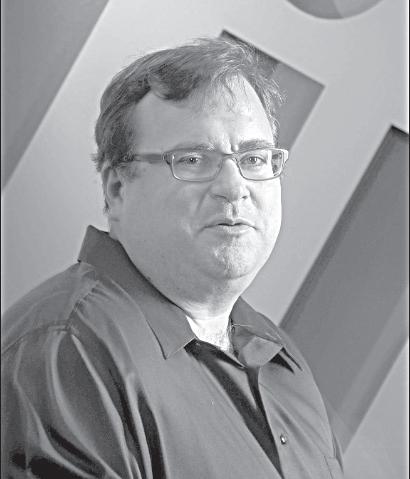

LINKEDIN co-founder Reid Hoffman launched The Trust in American Institutions Challenge last December with philanthropic accelerator Lever for Change. The $10 million open call will scale local solutions to restore public confidence in anything from education and government to media and medicine.
Hoffman, a 57-year-old Democratic megadonor, finds philanthropy offers more opportunities “for beginning the trust stuff.” He said that’s because there are no conflicting interests other than the mission.
The challenge is not focused solely on youth. Hoffman said “just about everybody” can recognize society’s trust issues. As he sees it, the problem isn’t that institutions don’t work for young people. They do work, according to Hoffman, and “part of being young is learning that.” The idea, he added, “is to reconnect and revivify.”
“We’re like fish in water. We don’t realize how important these institutions are to our ongoing environment,” Hoffman said. “Revitalizing them is an important part of a society that works.”
ANOTHER effort is connecting youth representatives with decision-makers to help civic institutions reach new generations ahead of the United States’ 250th anniversary.
Recognizing that today’s teens and young adults will inherit American democracy, Youth250 is passing the microphone to young people as the country reflects on its past and looks ahead to its future. Institutions can request free input from the Youth250 Bureau. The initiative includes 100 advisors ages 18 to 30—all compensated by the civic network Made By Us—who are working with museums, historic sites and libraries to center Gen Z’s perspectives.
Dillon St. Bernard, the 25-year-old Youth250 documentary series director, said the campaign “is about turning representation into power.”
He emphasized the need to build intergenerational coalitions. Today’s challenges—climate change, democracy and racial justice—haven’t been solved by their predecessors, according to St. Bernard.
He said, “we as a generation have known nothing but a house on fire and want to see what it would look like to stop that spread.”
n Cover photo by Markus Spiske on Pexels.com
